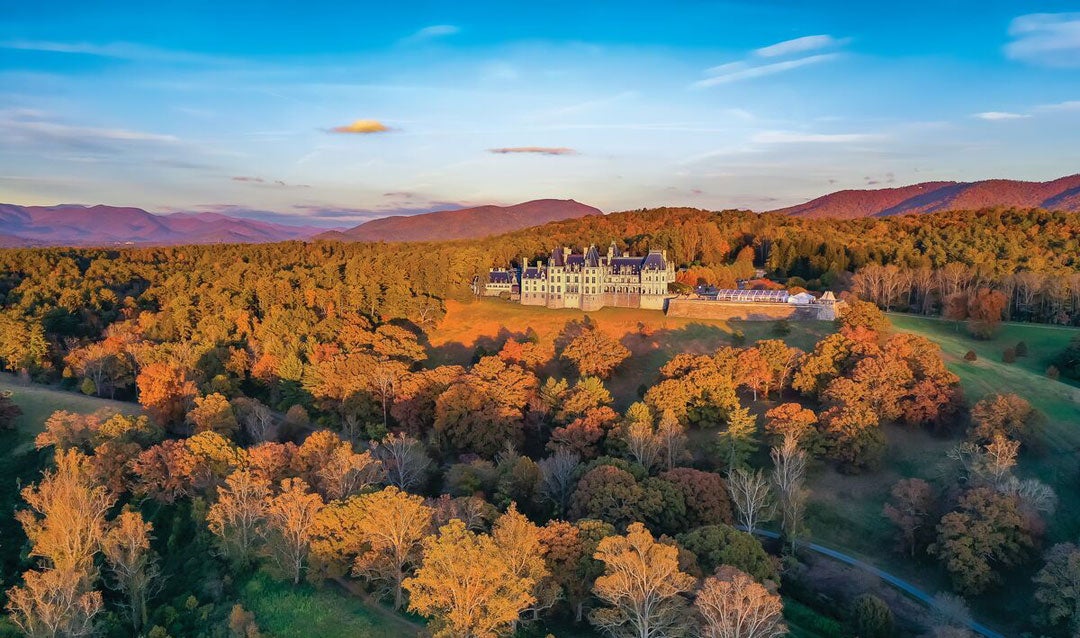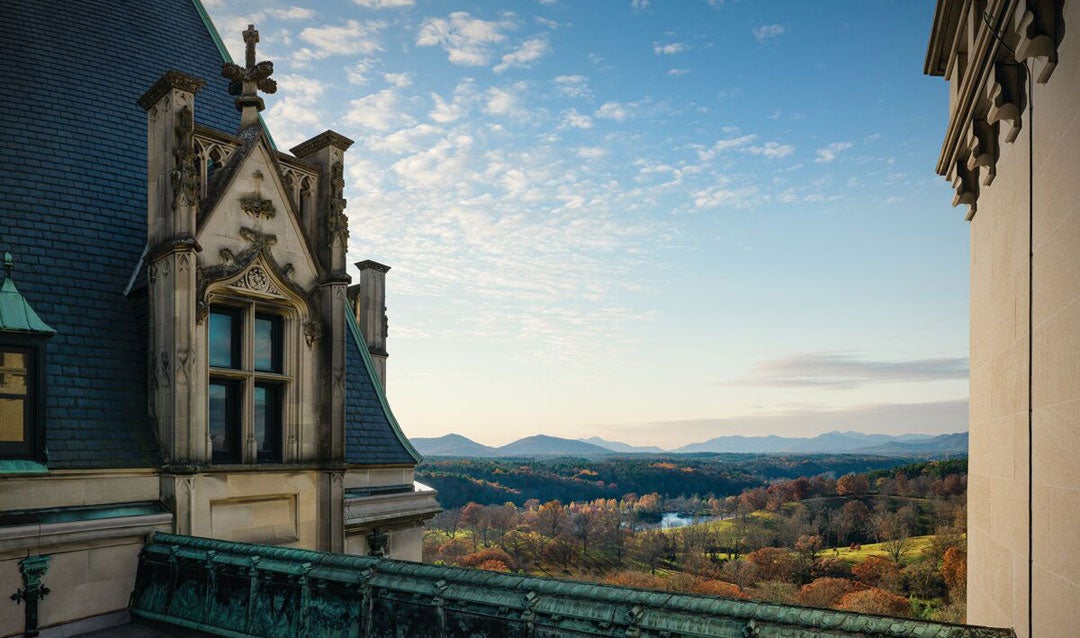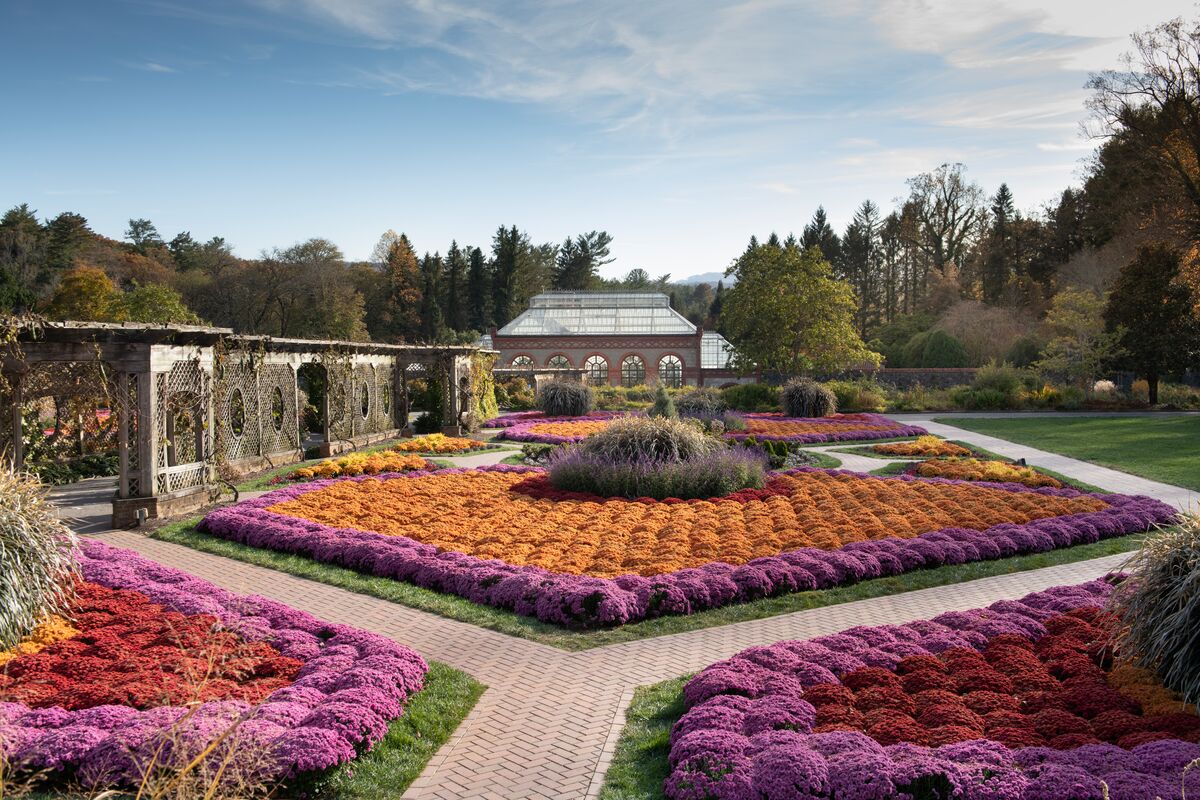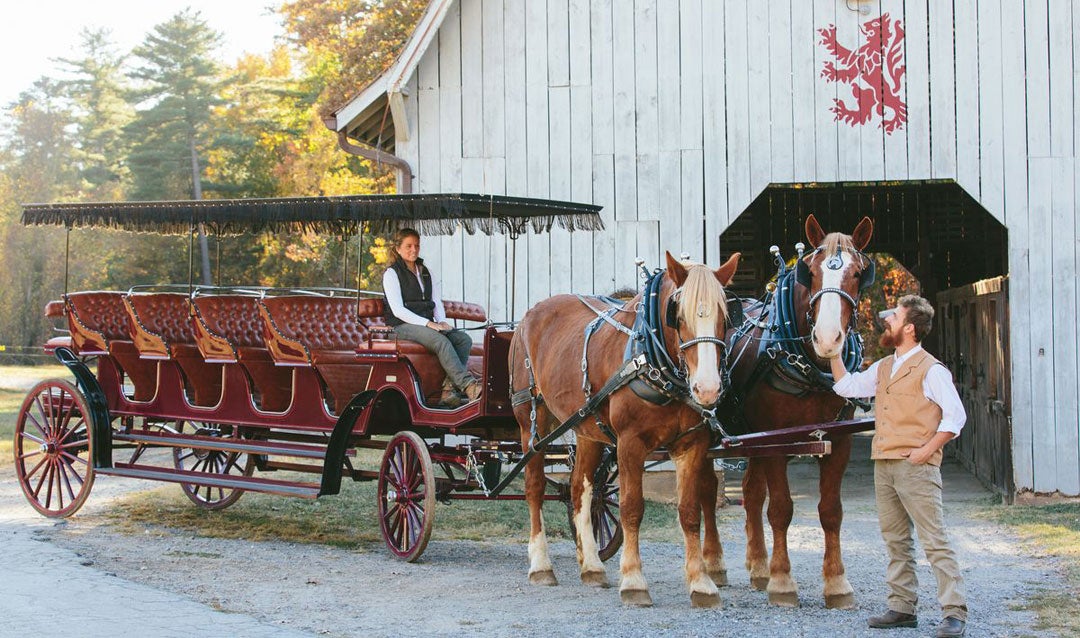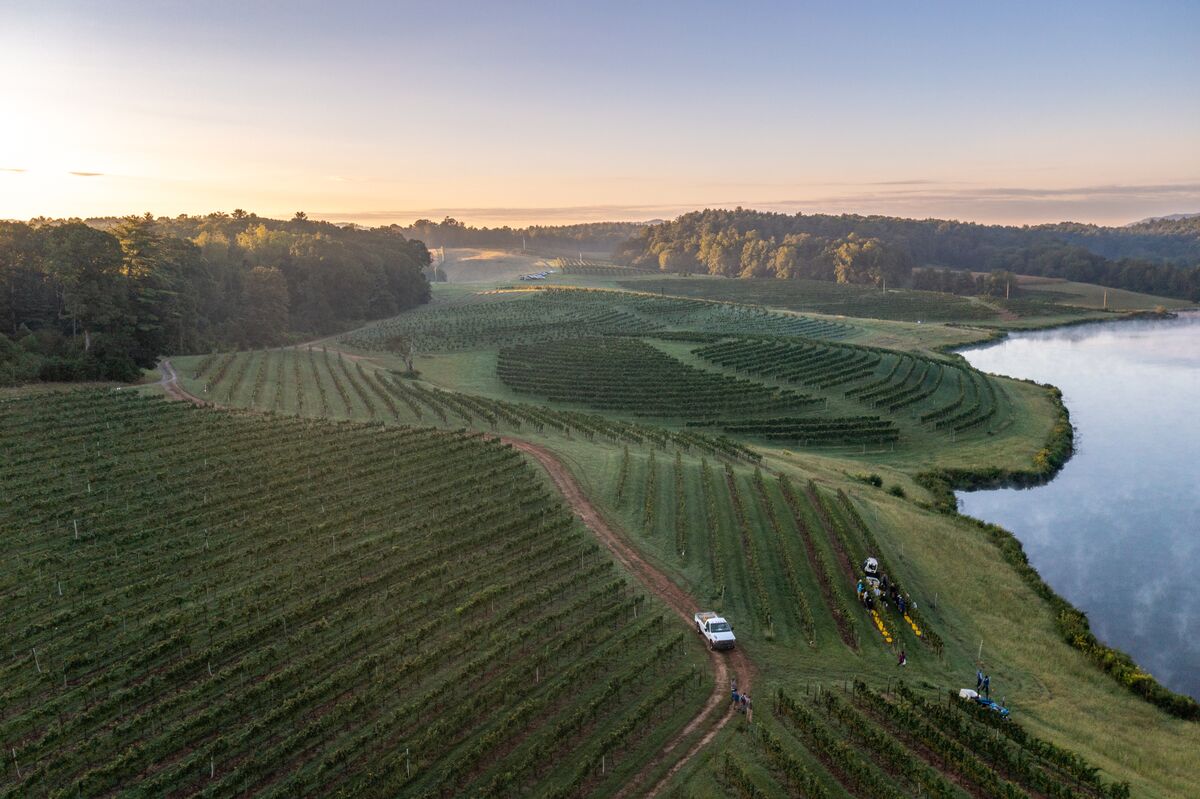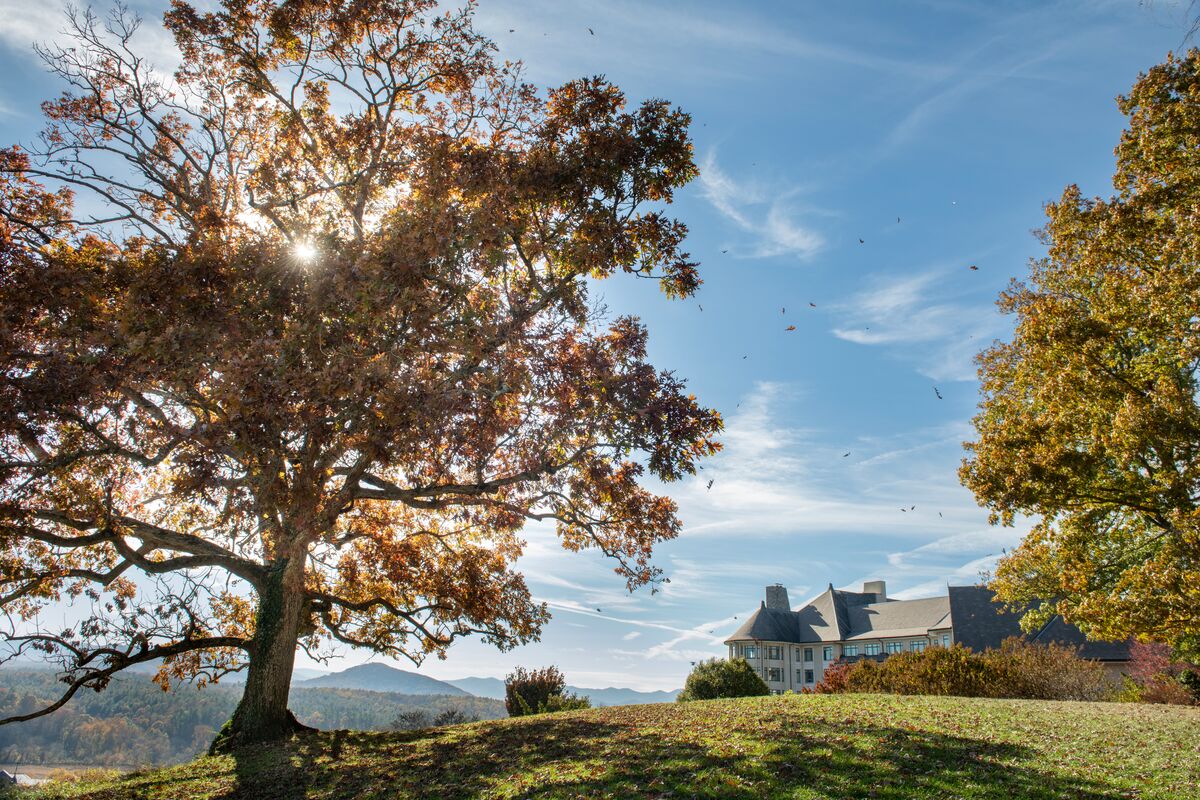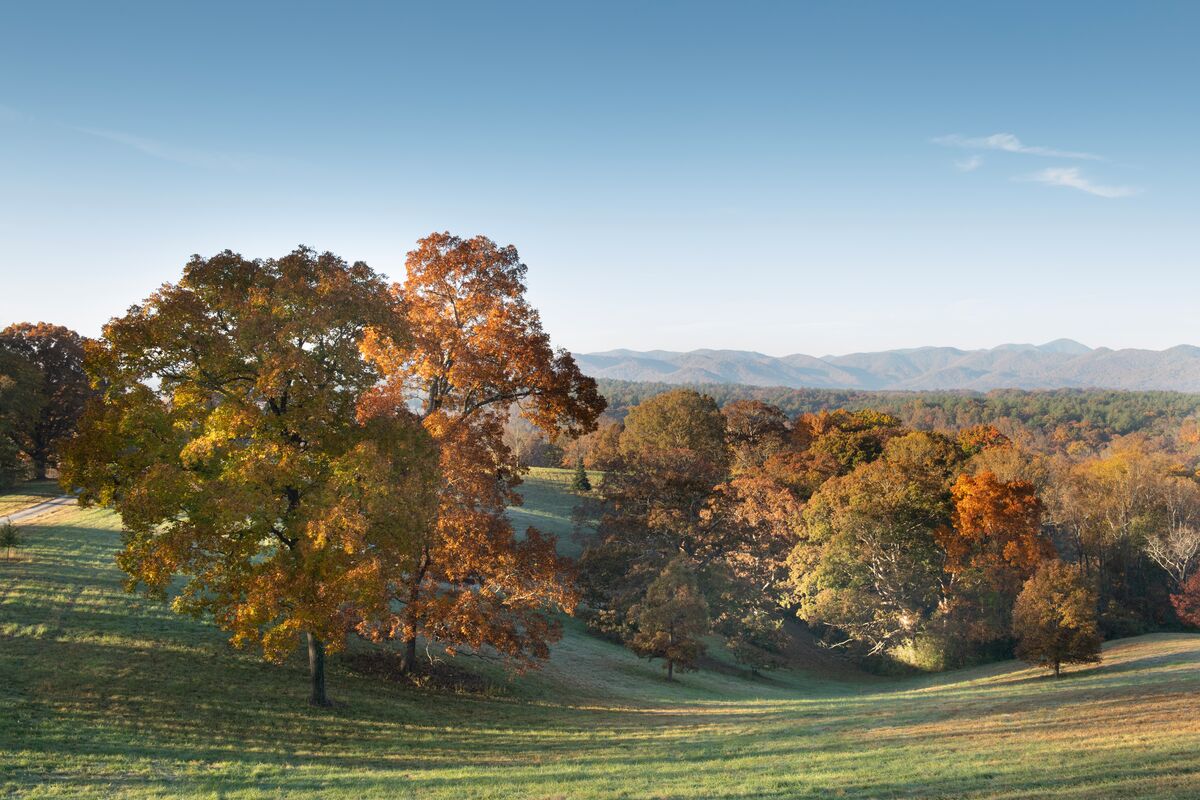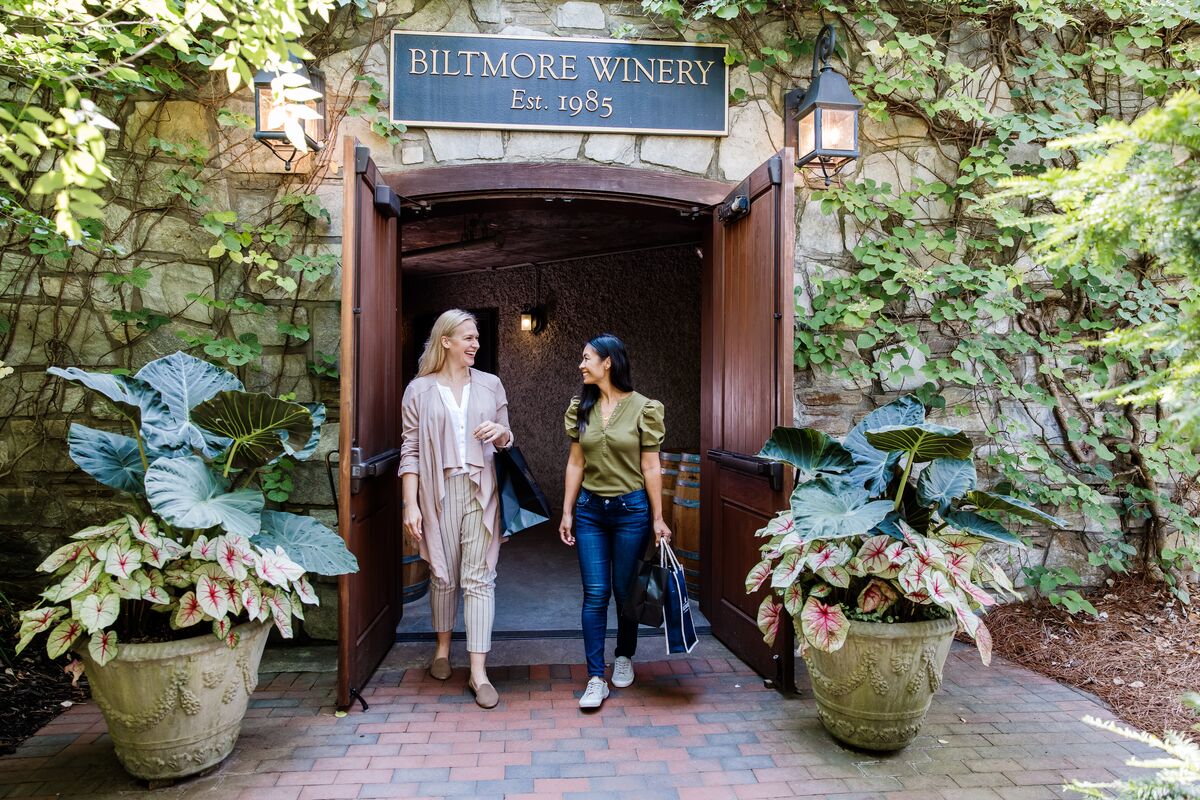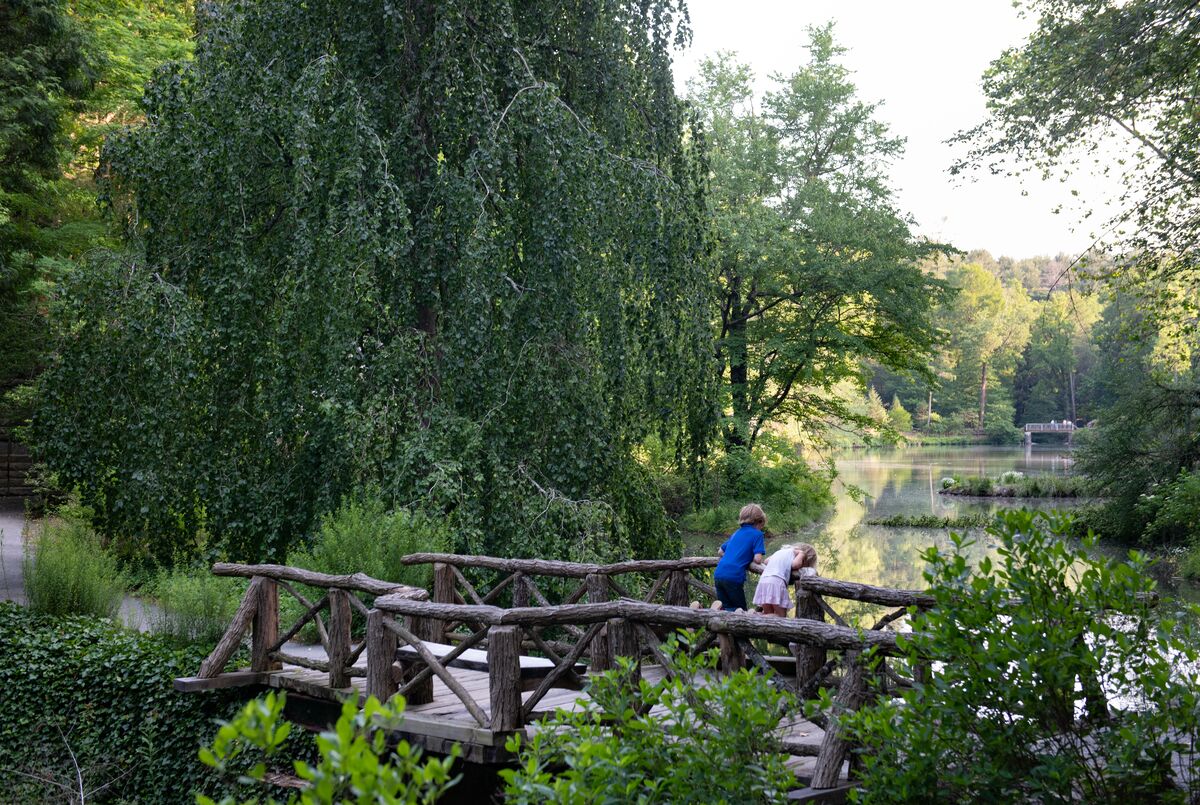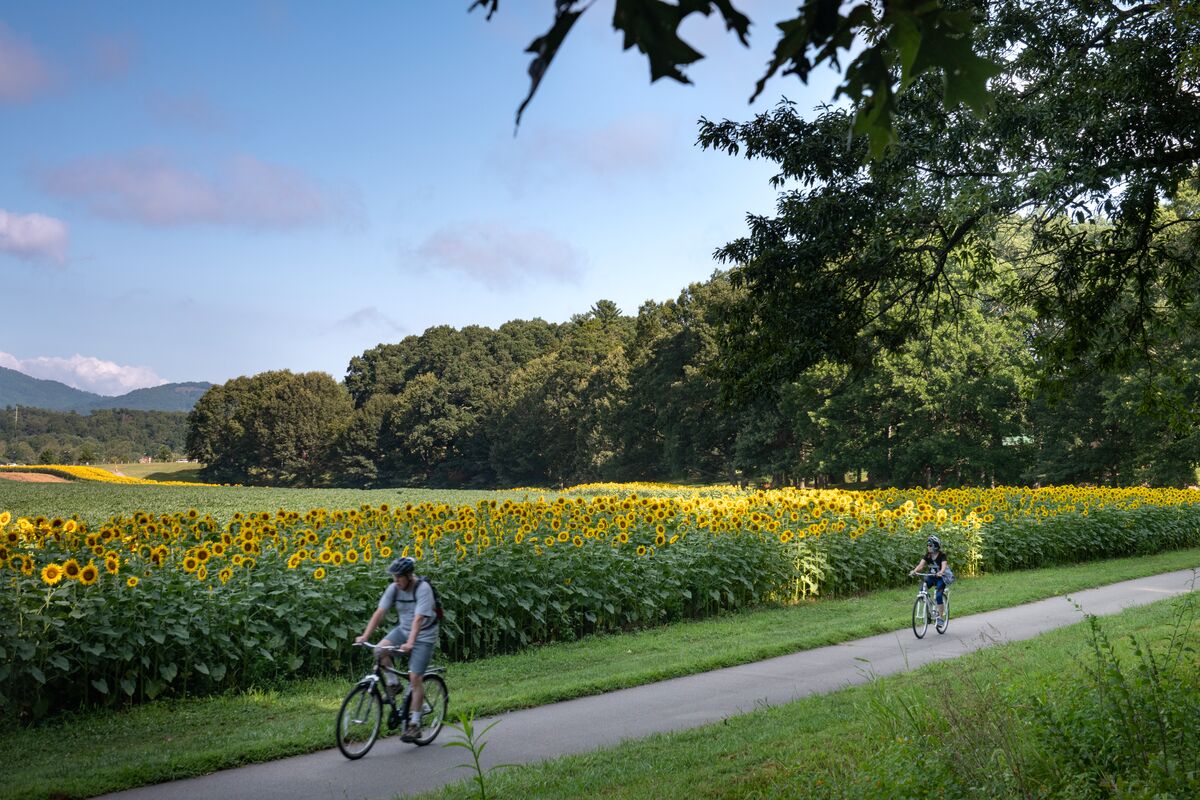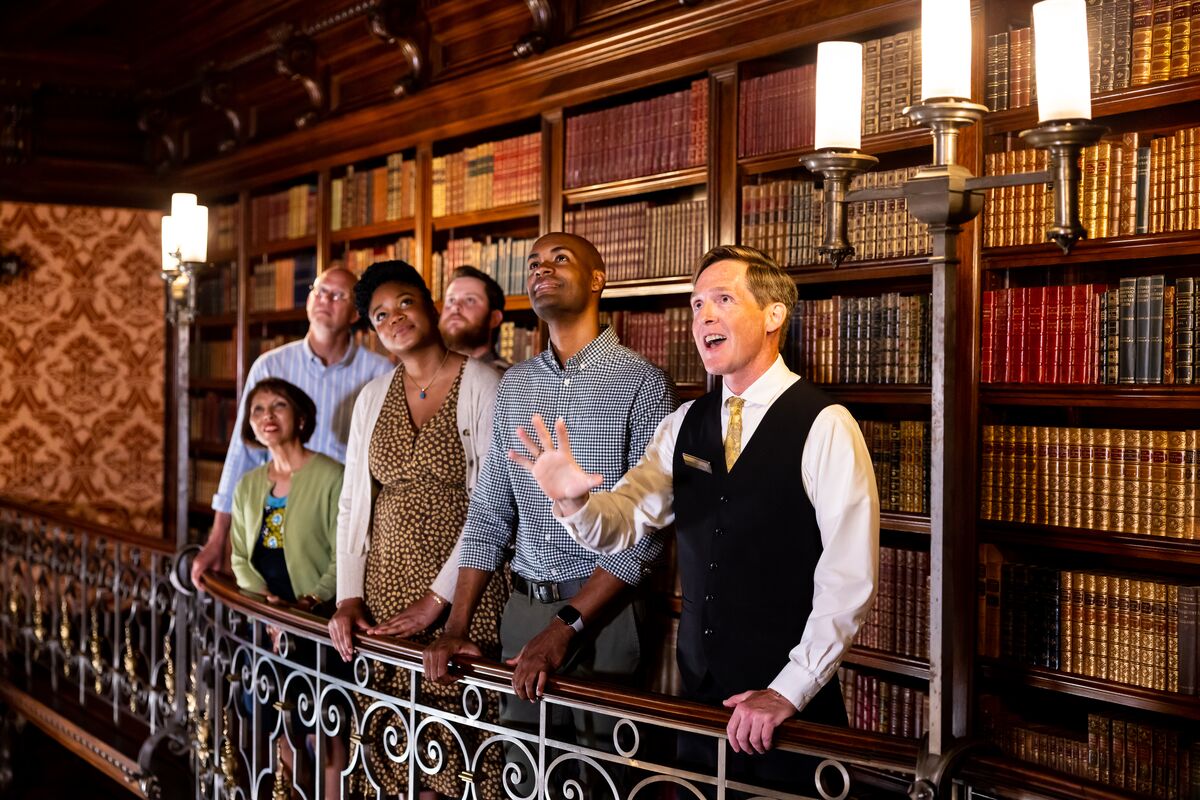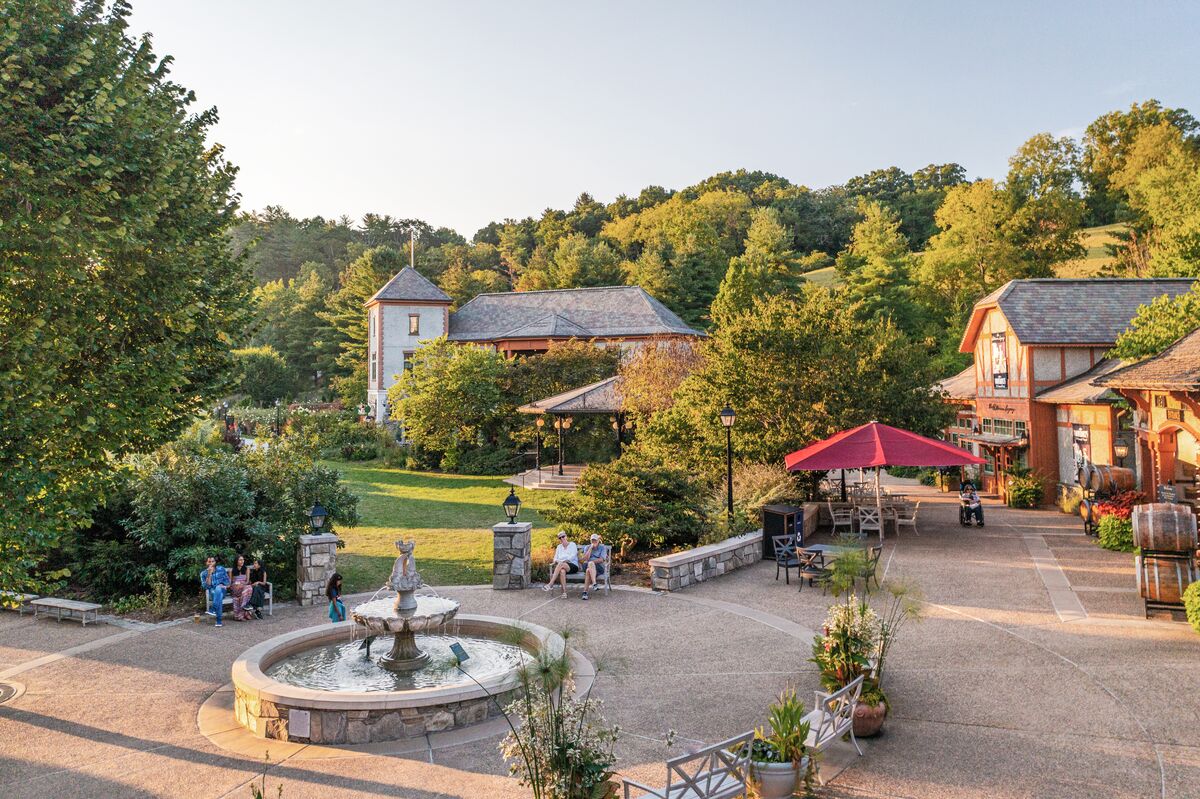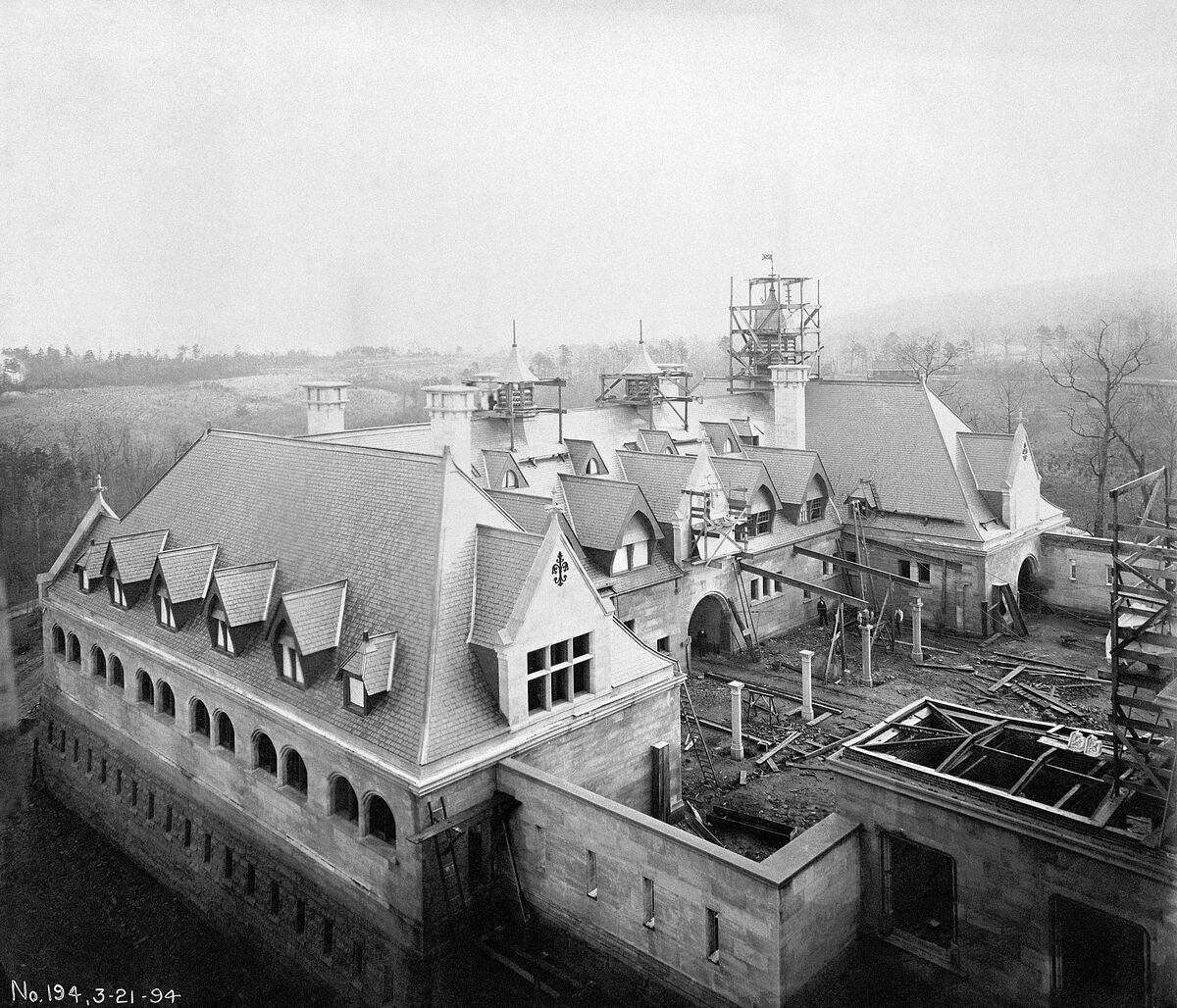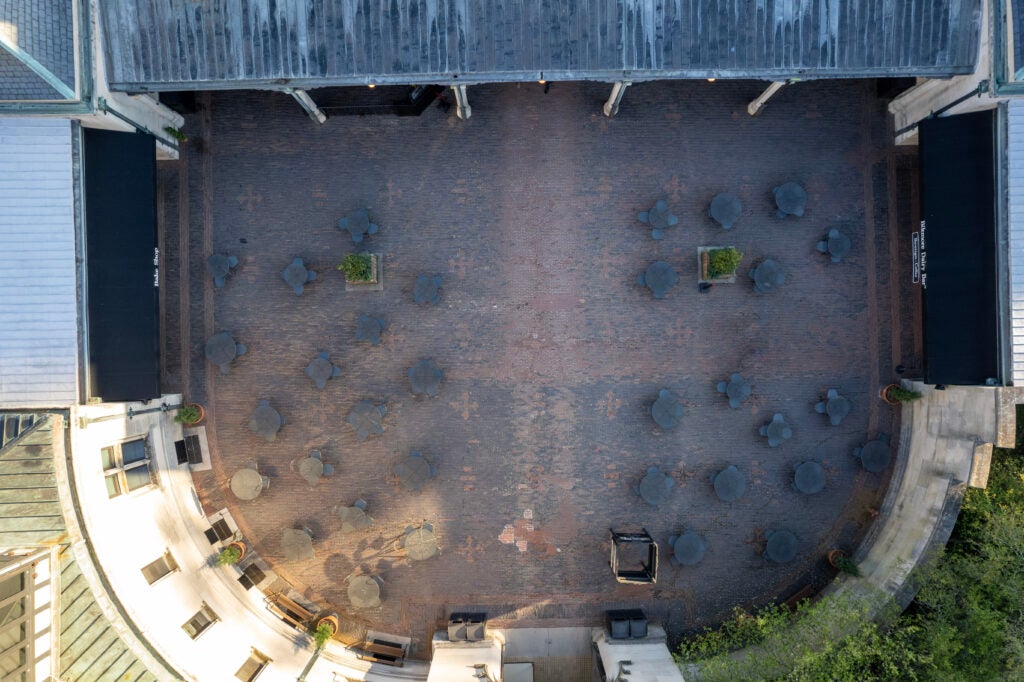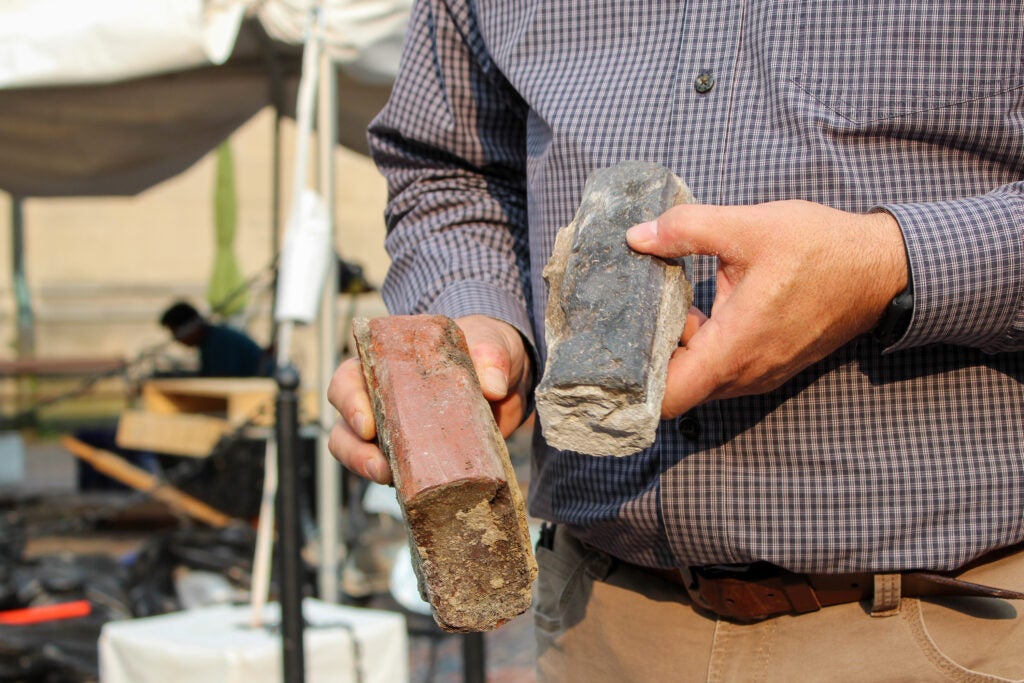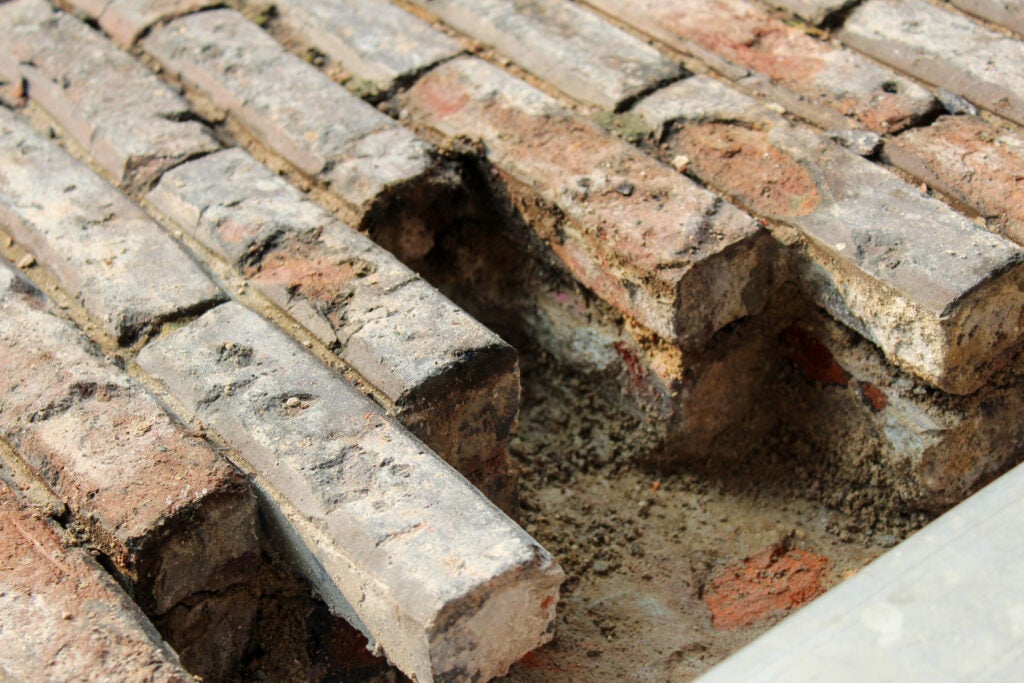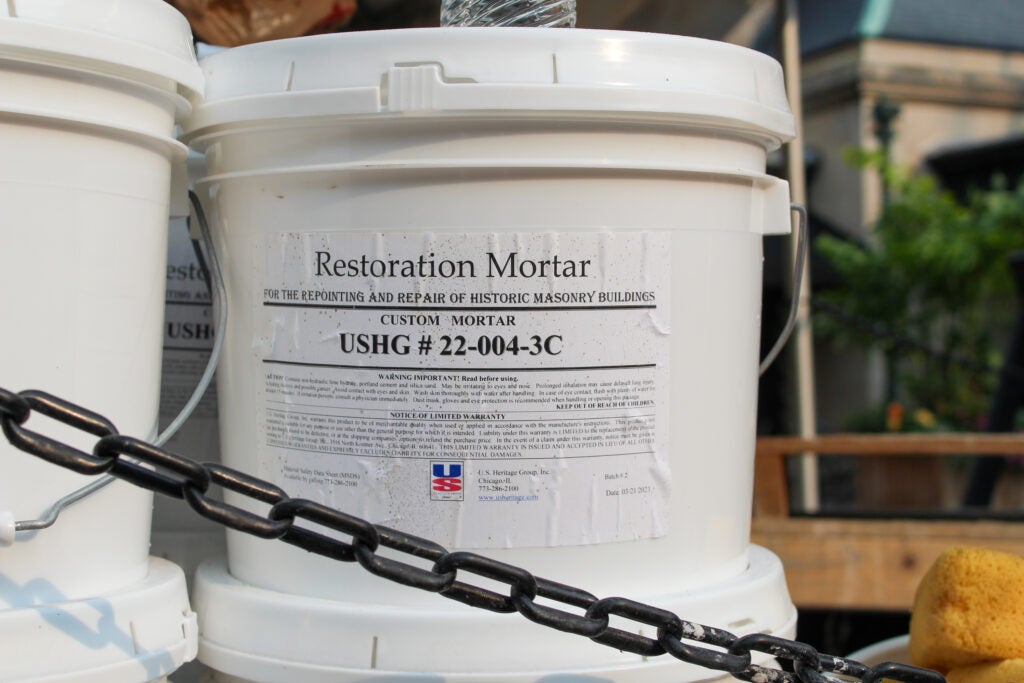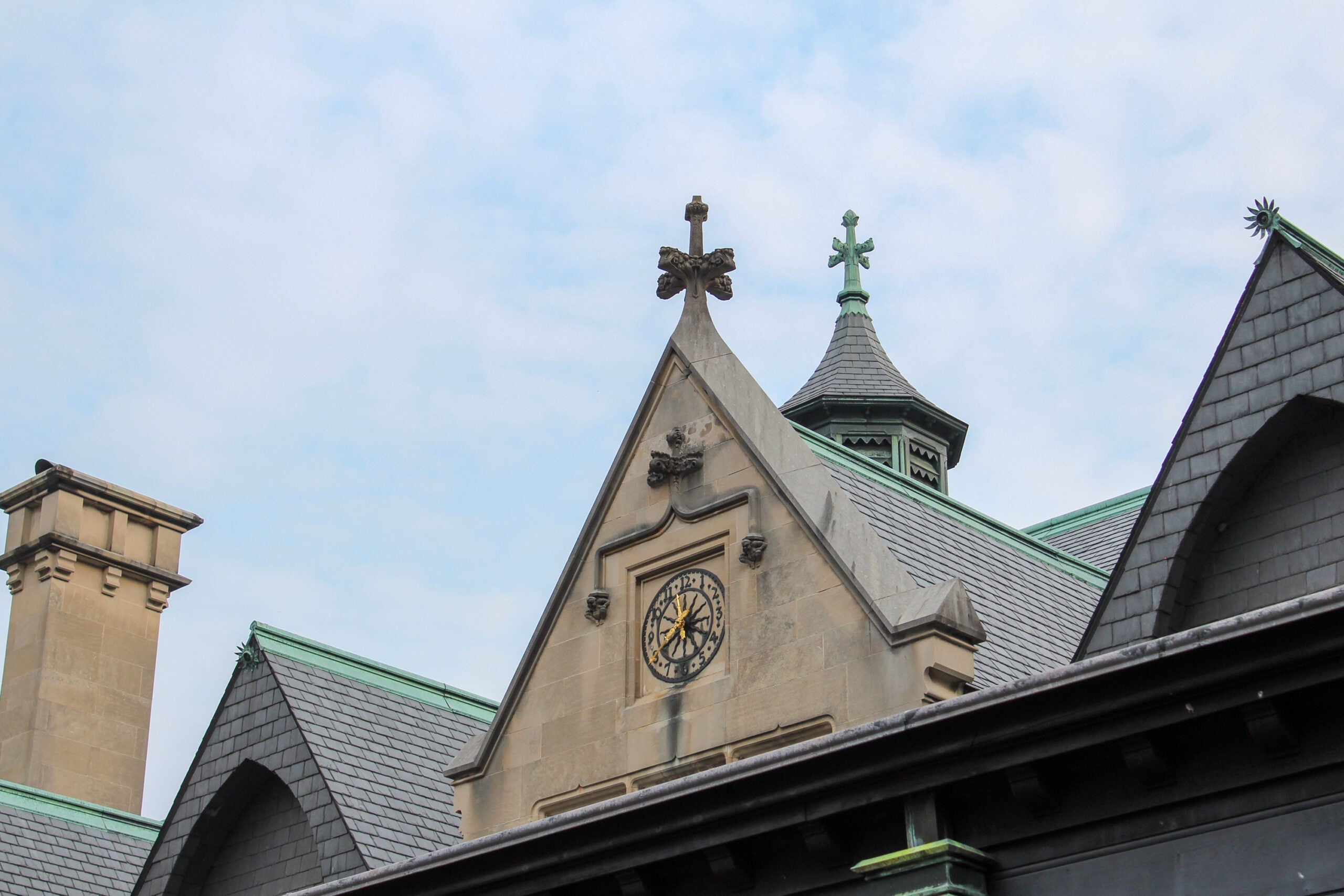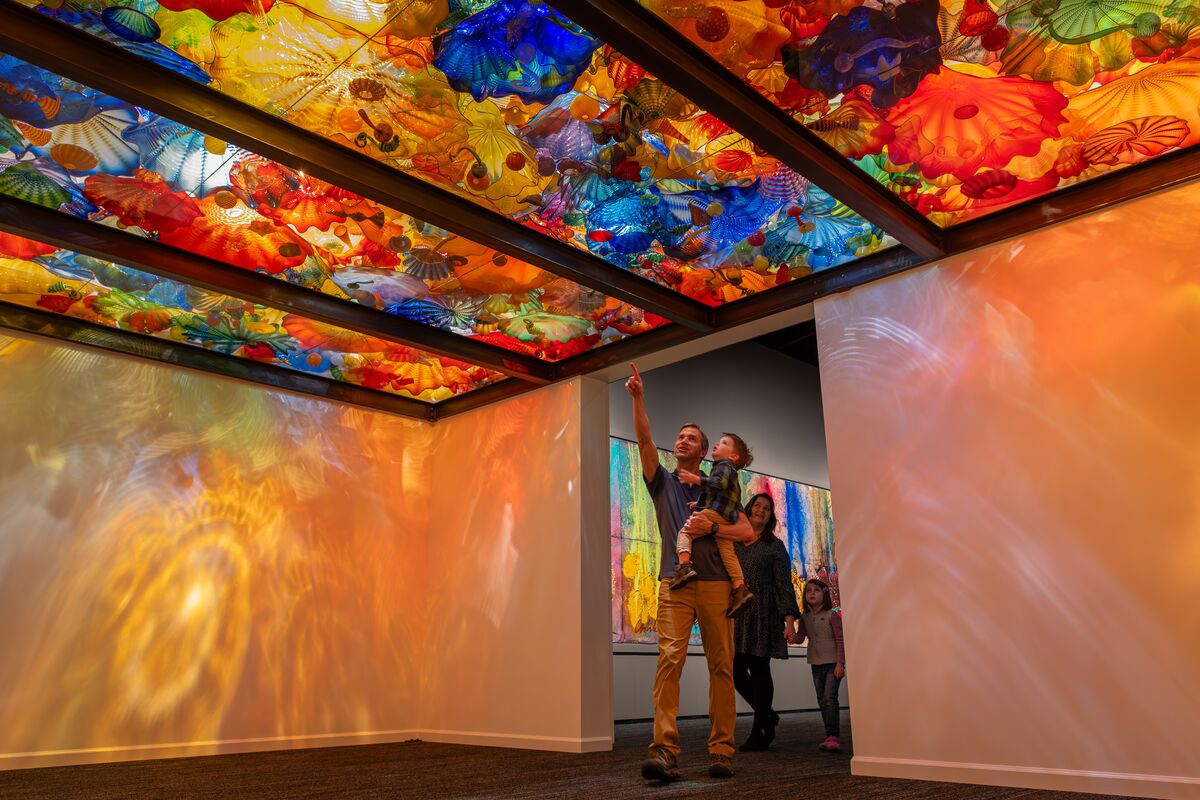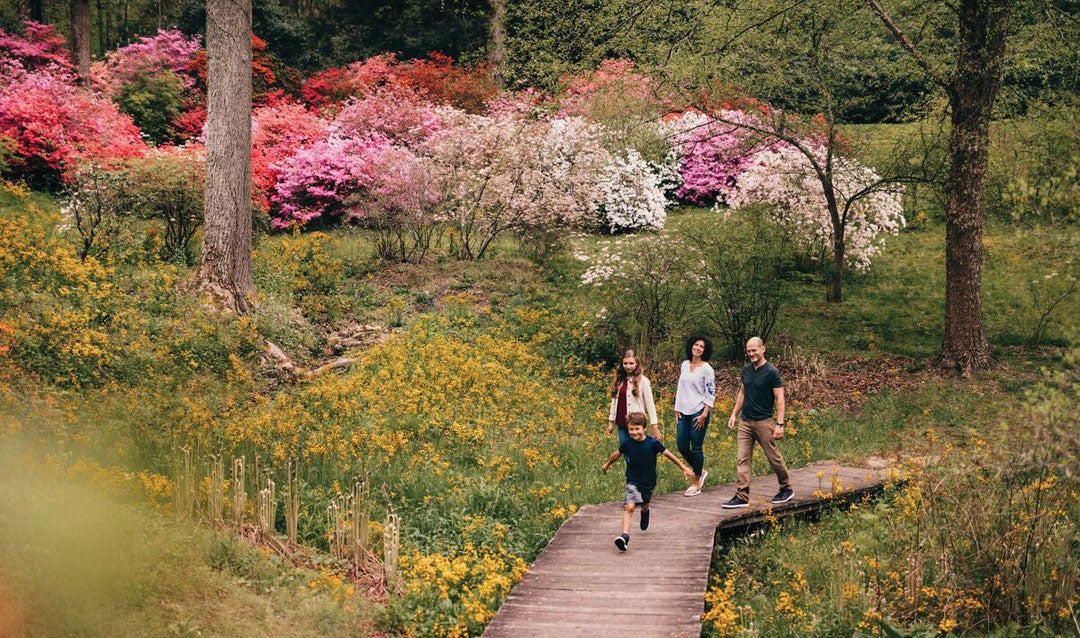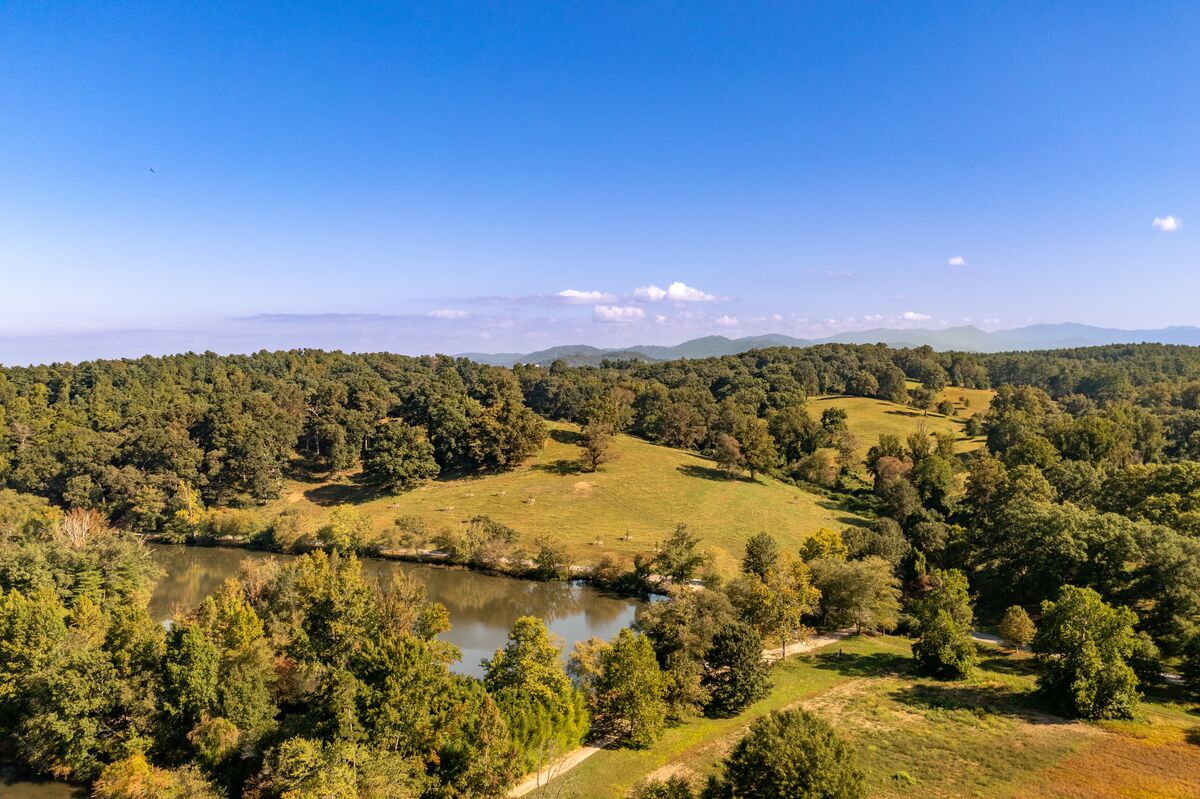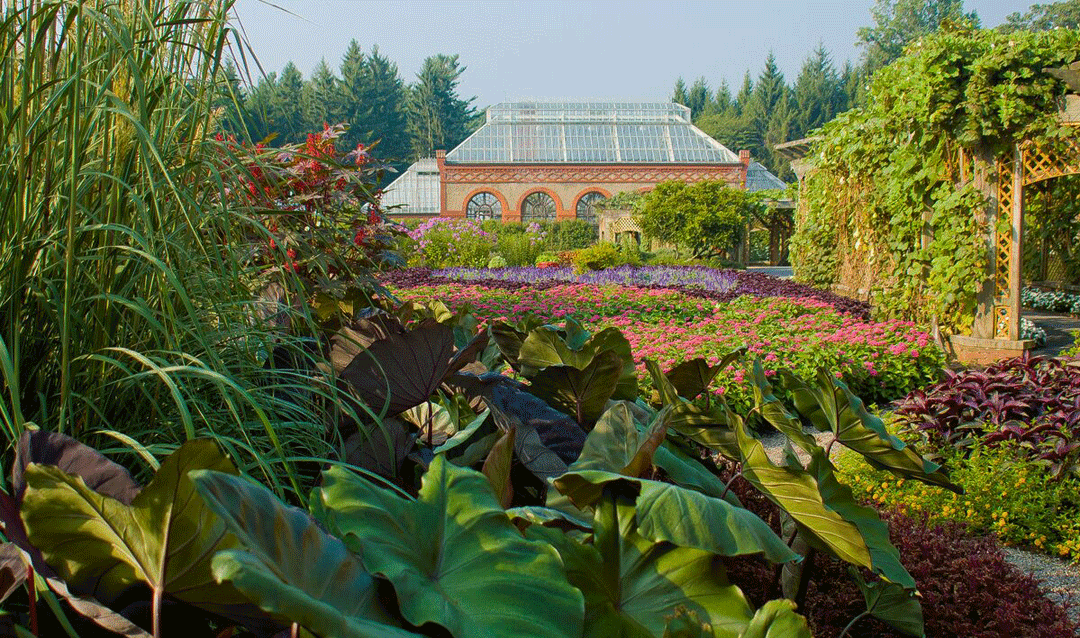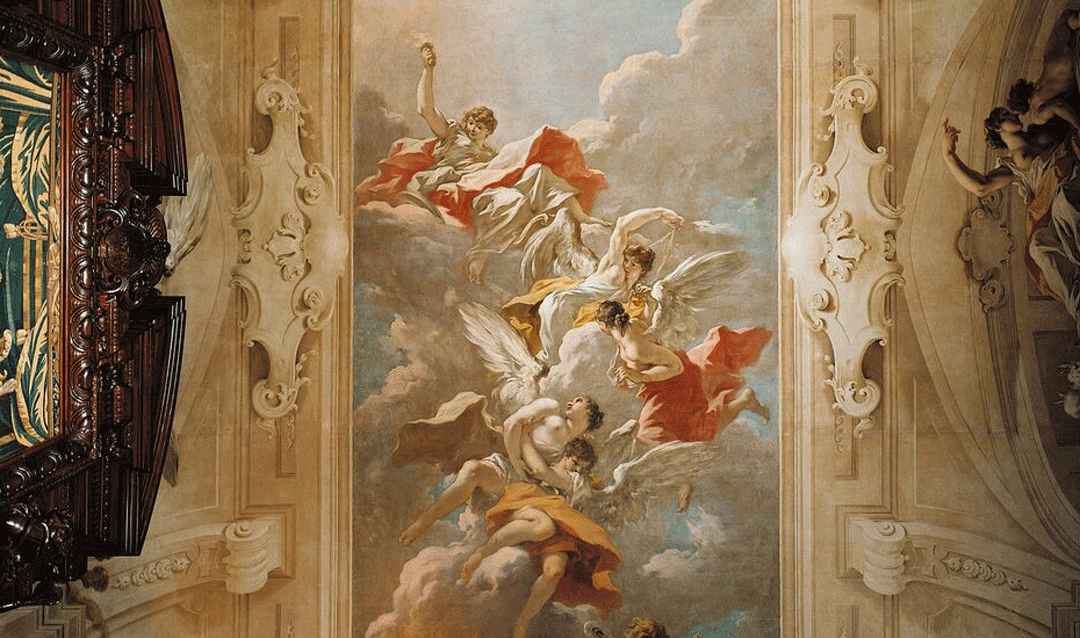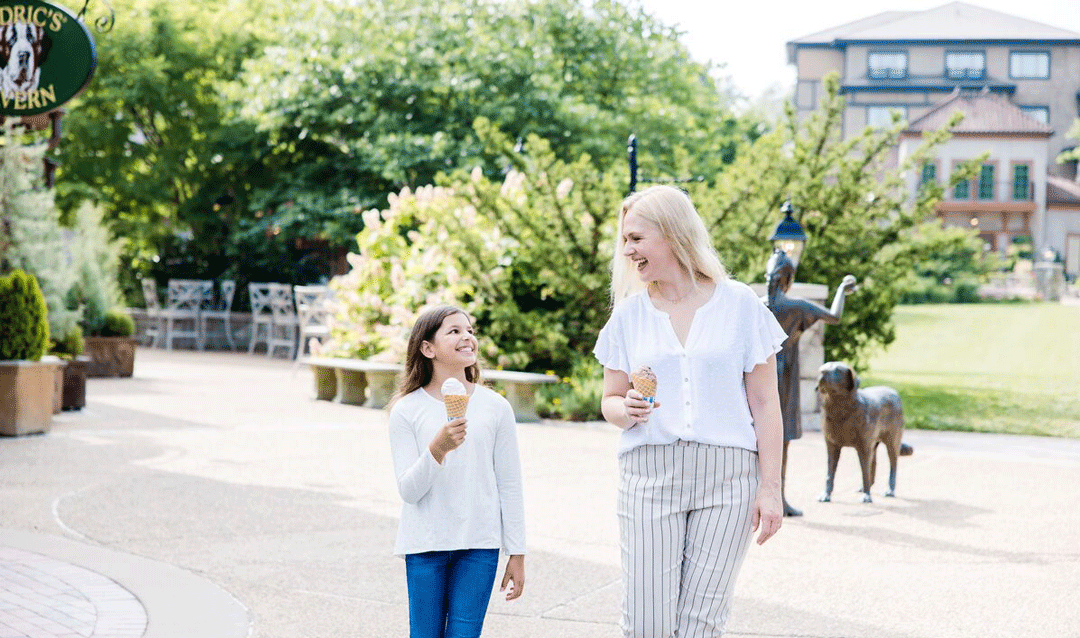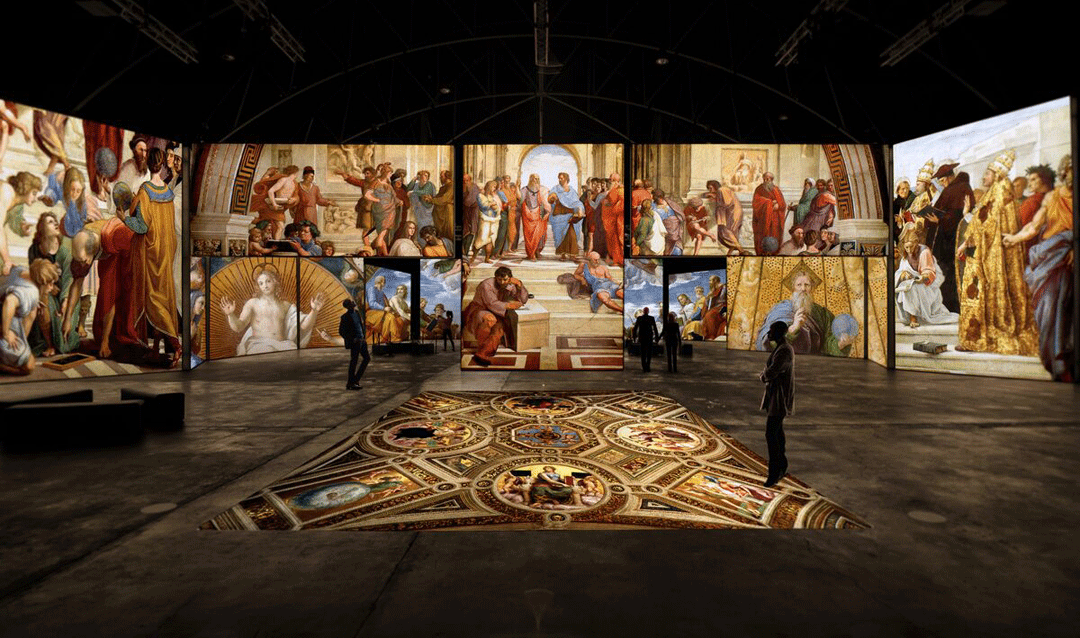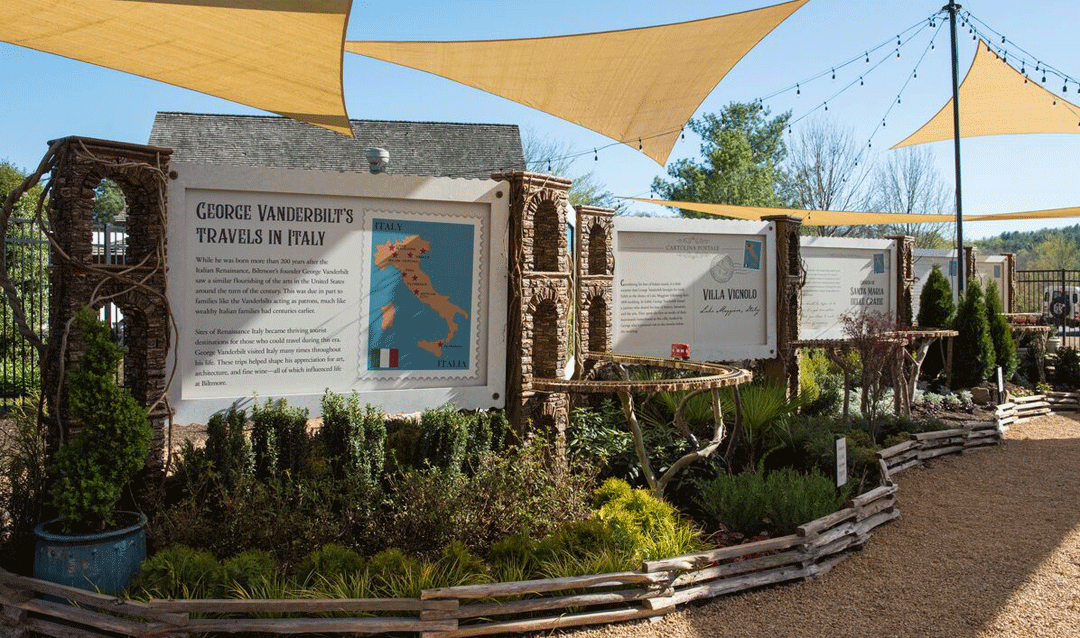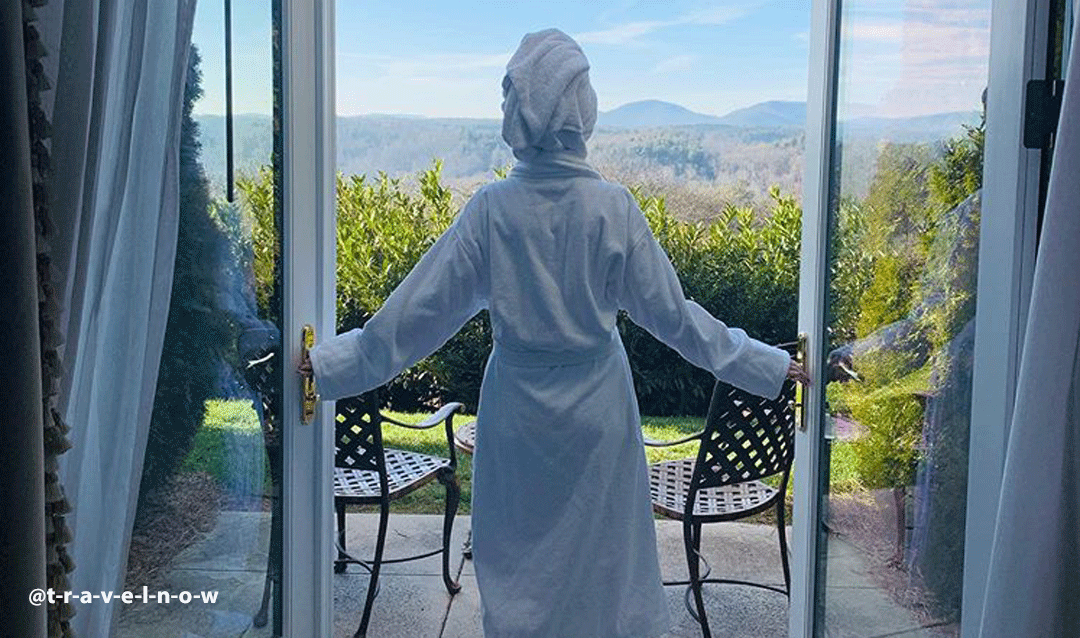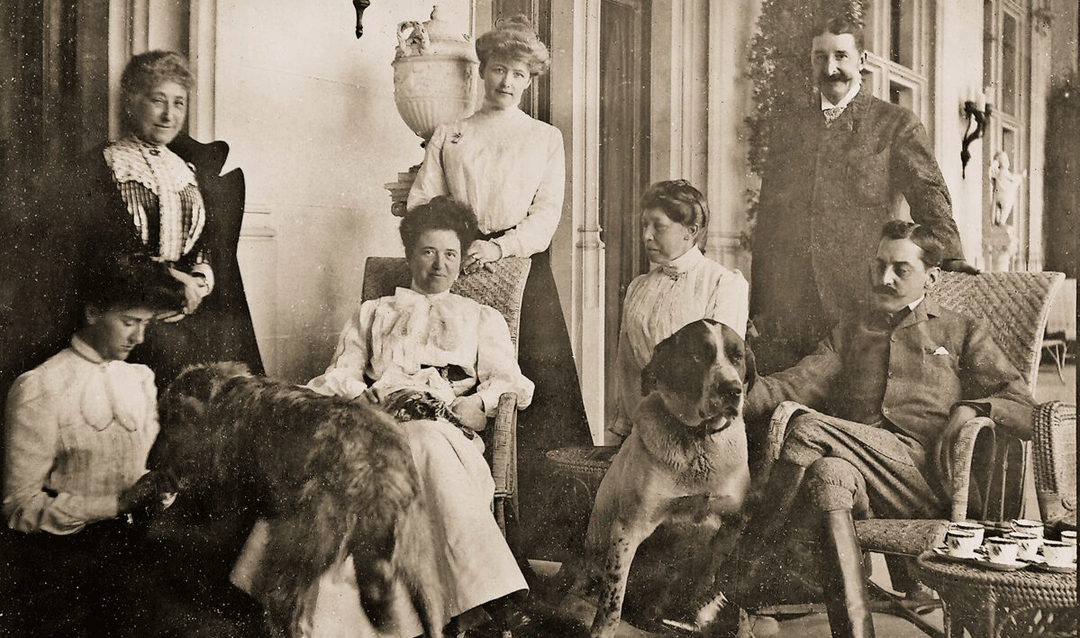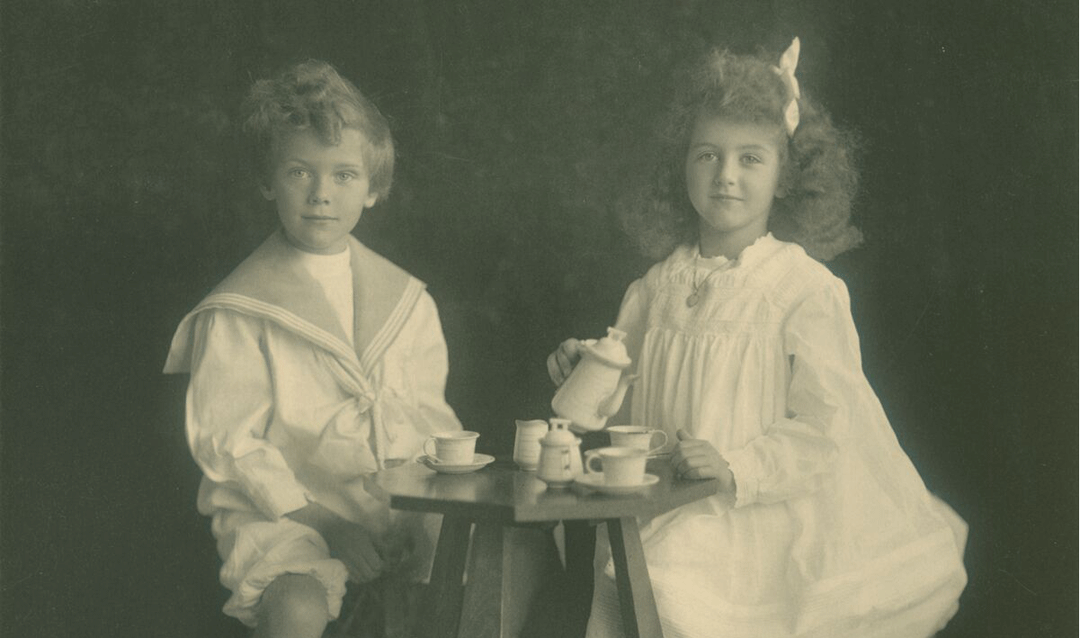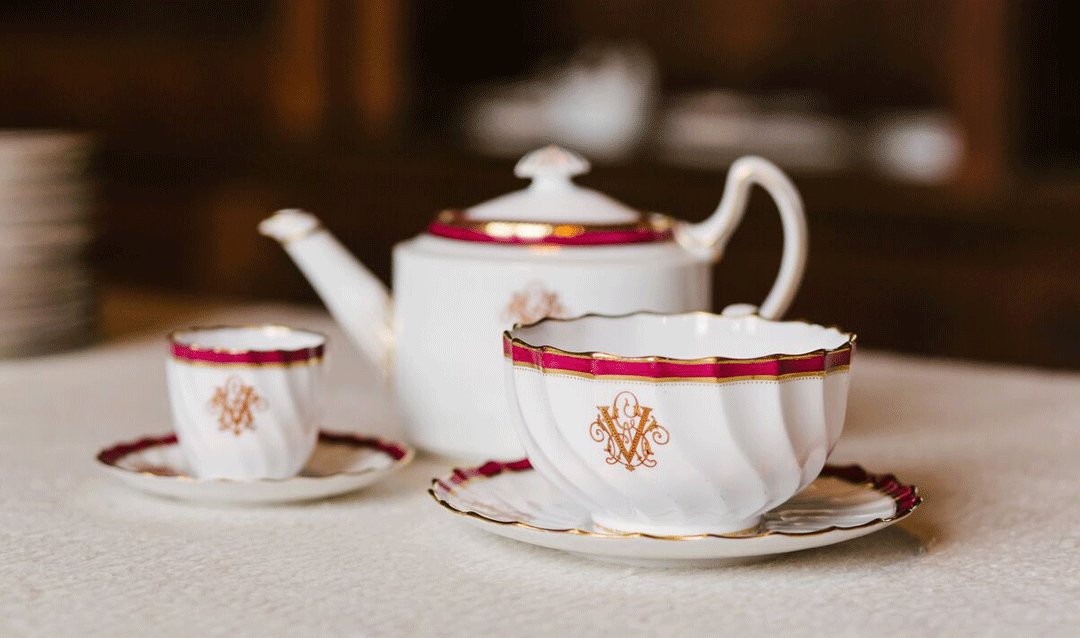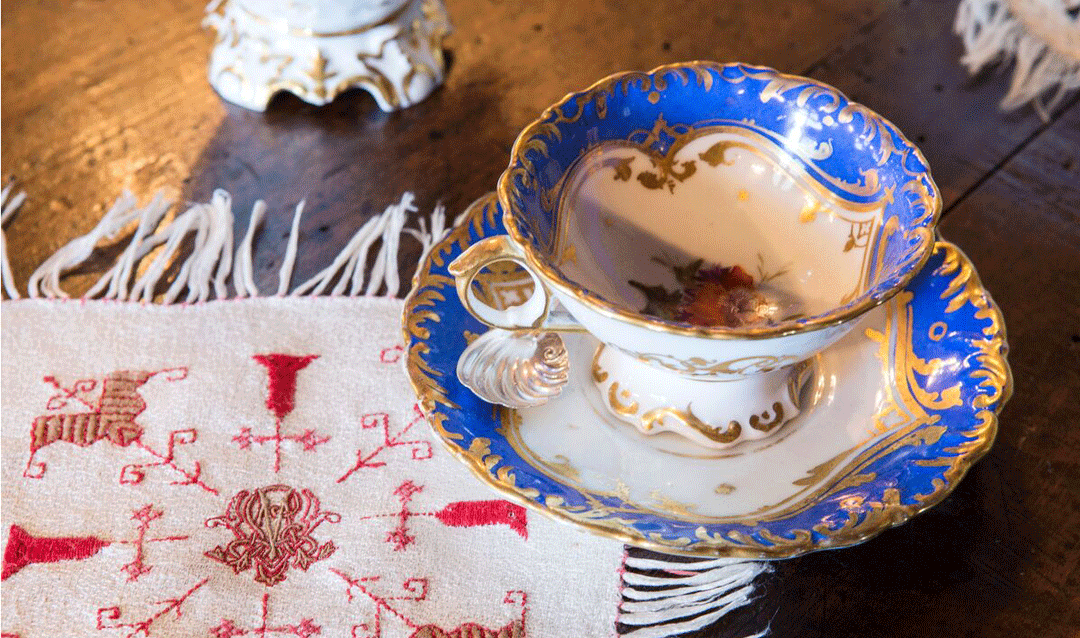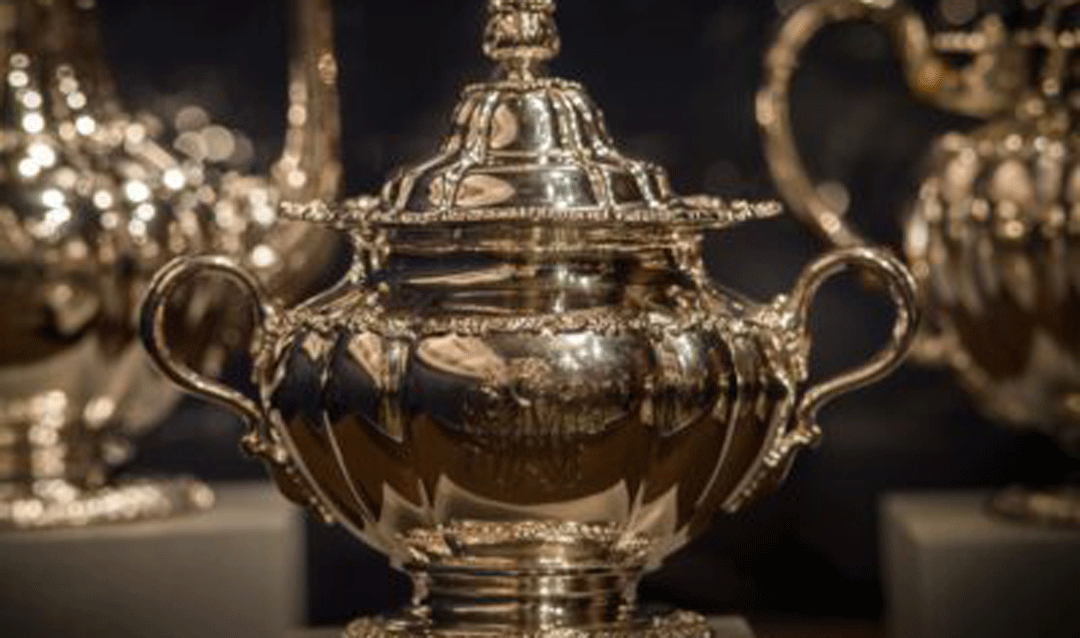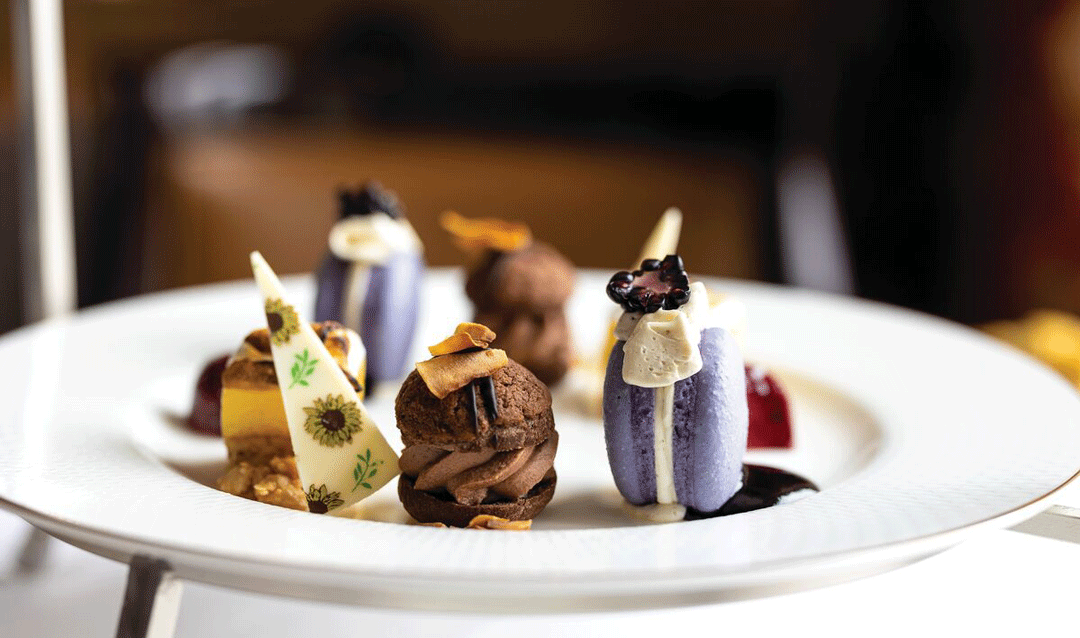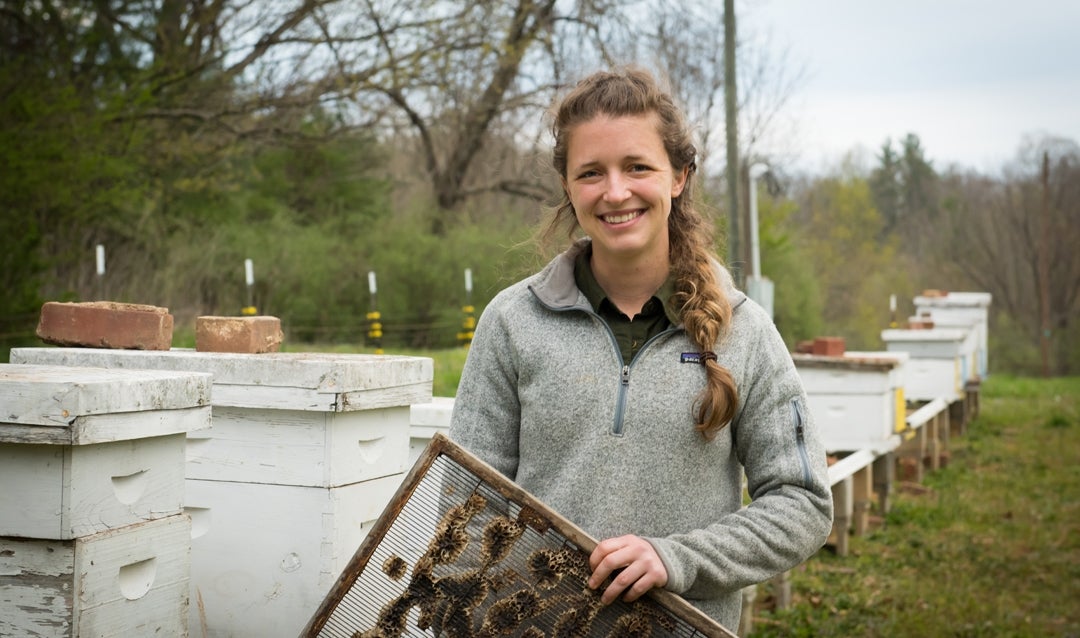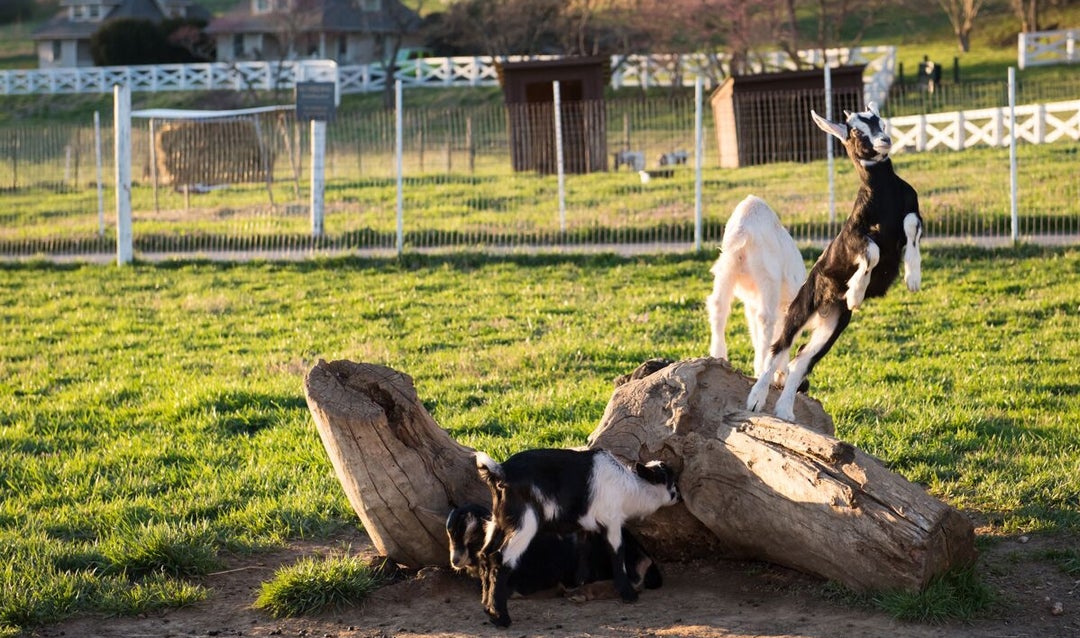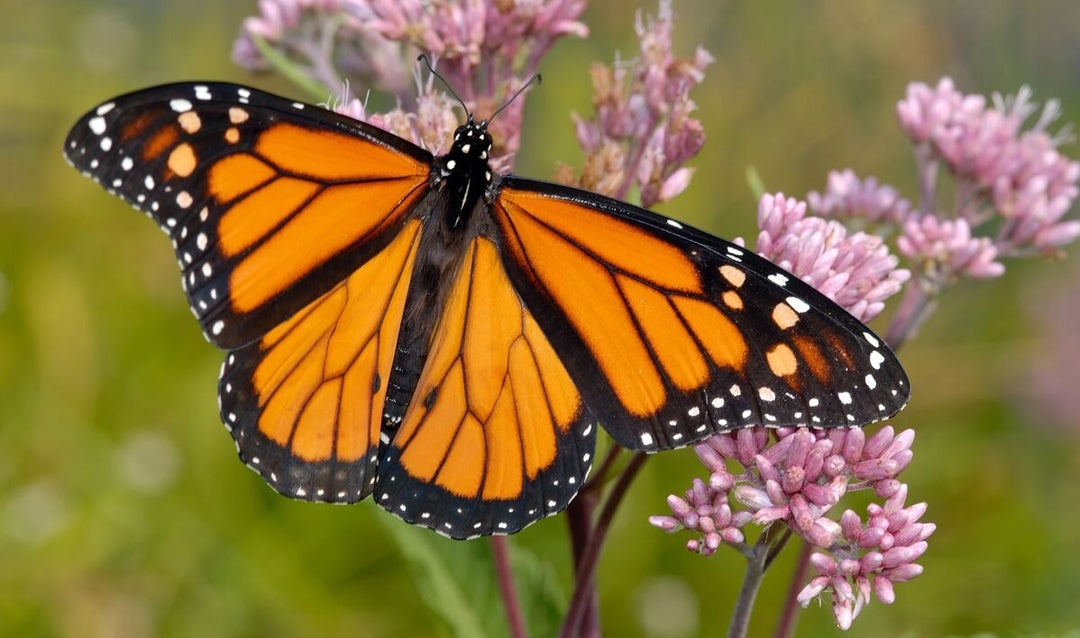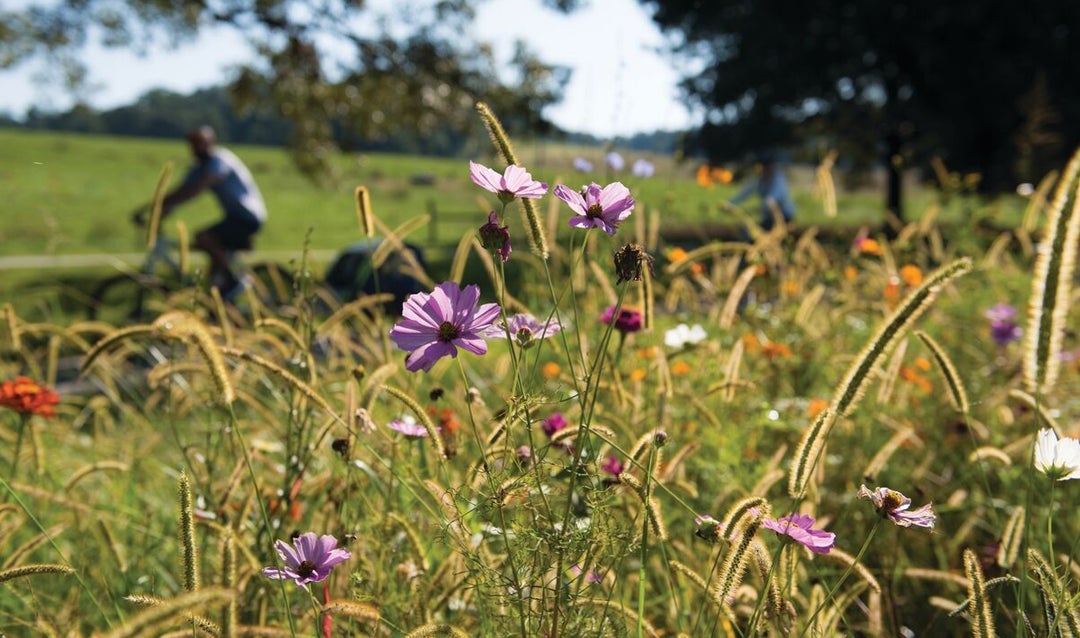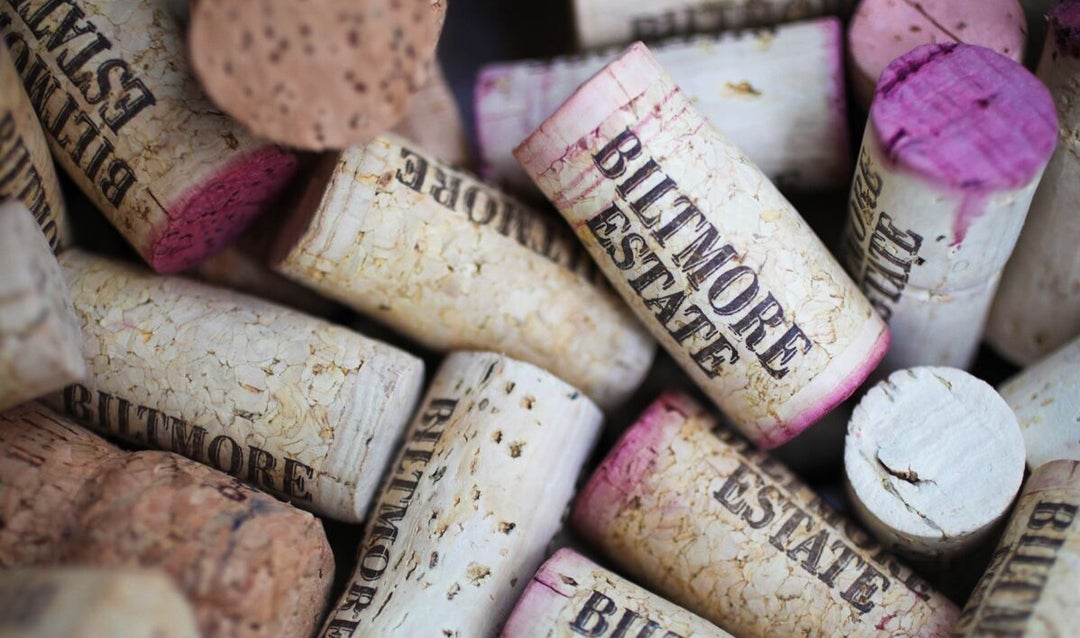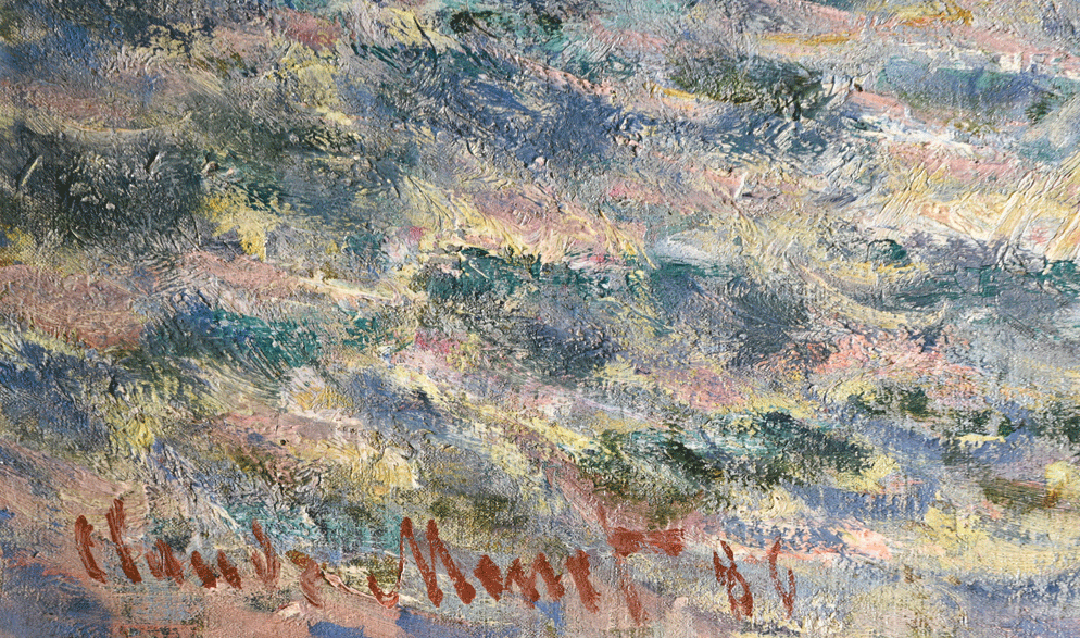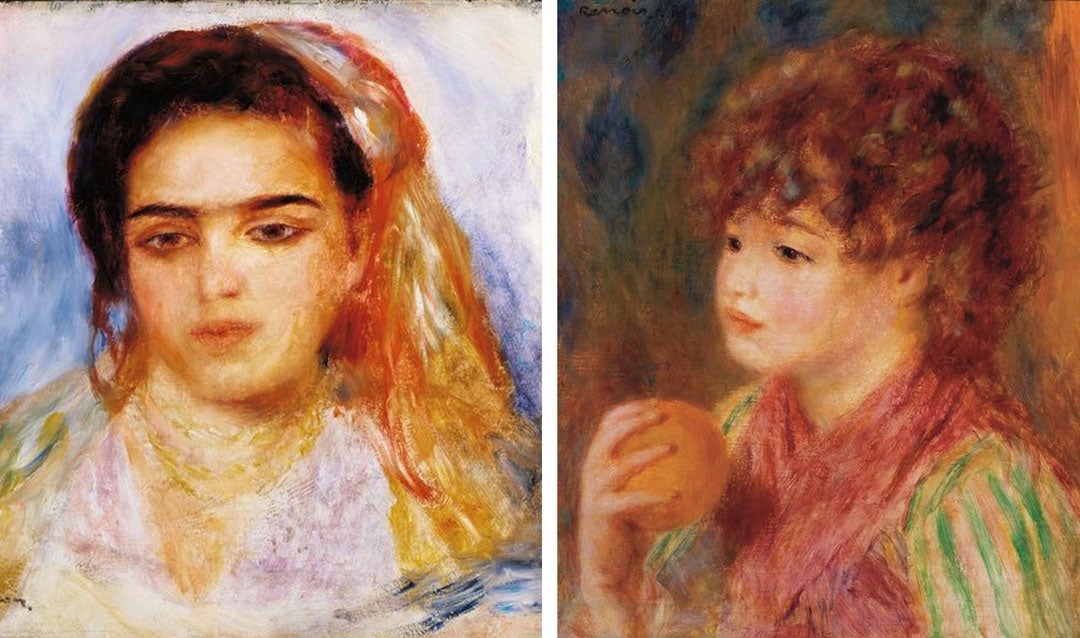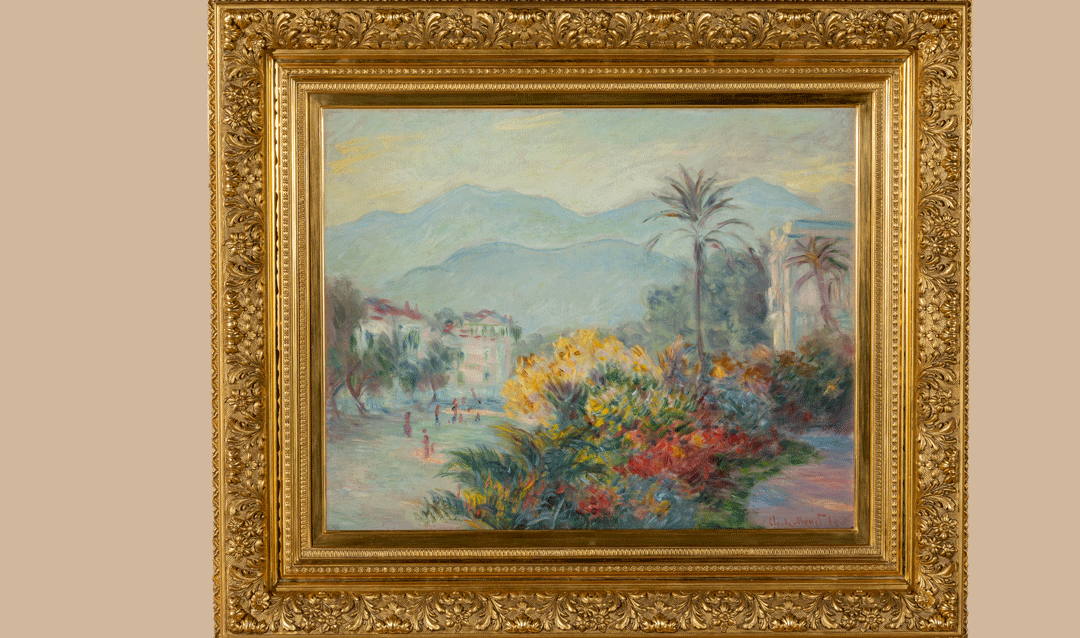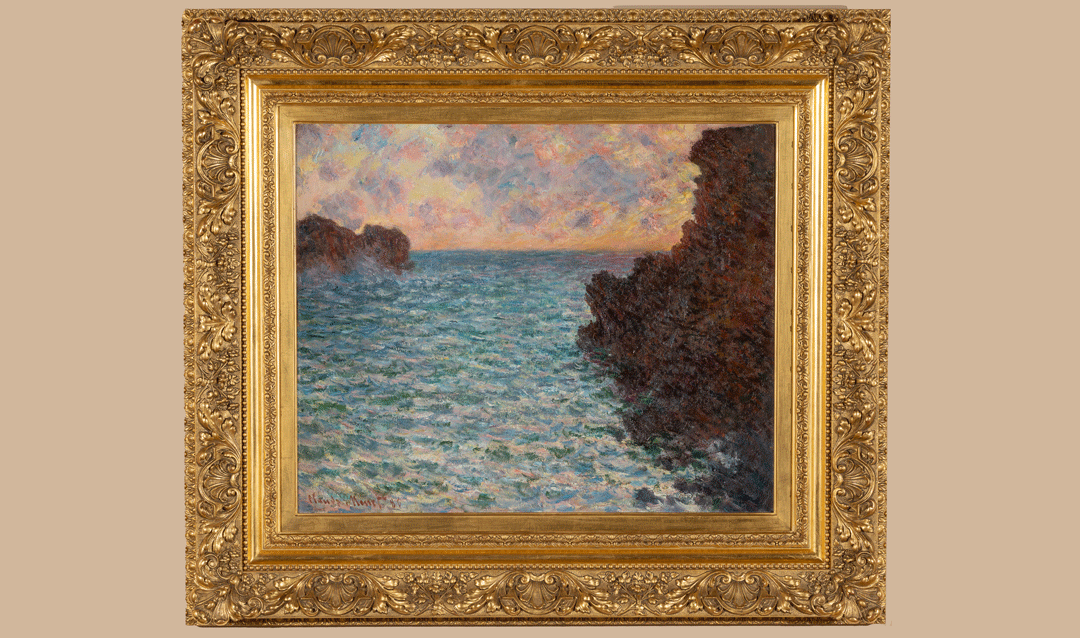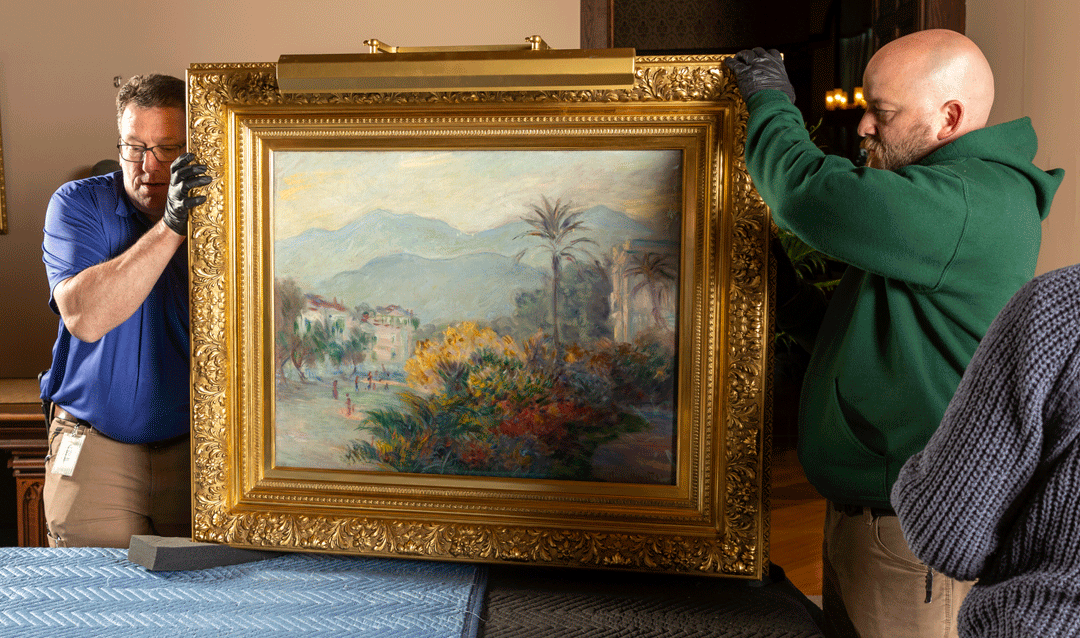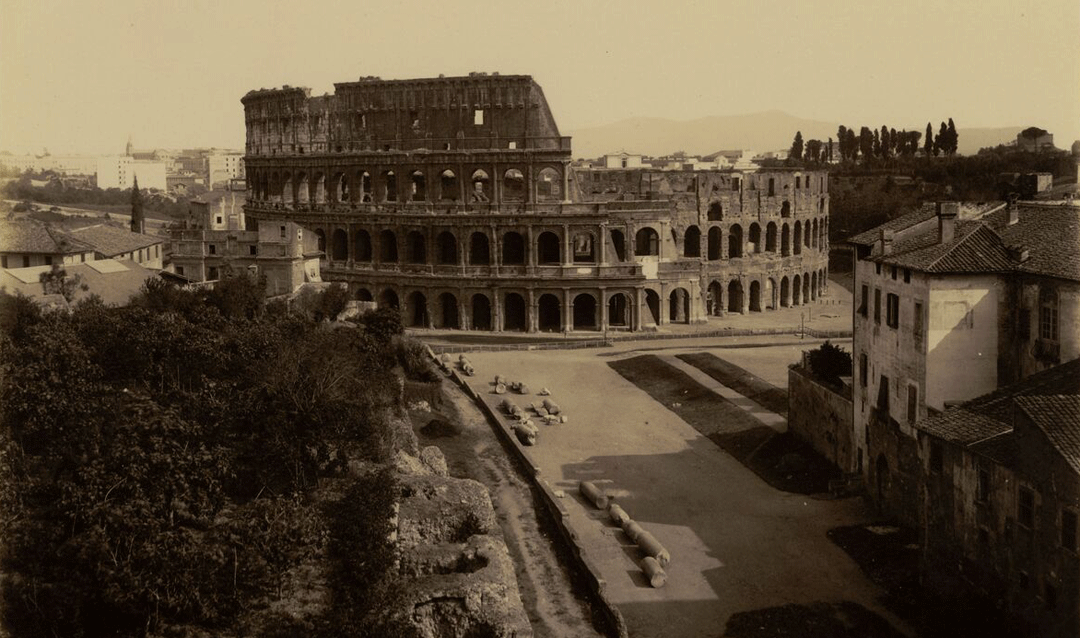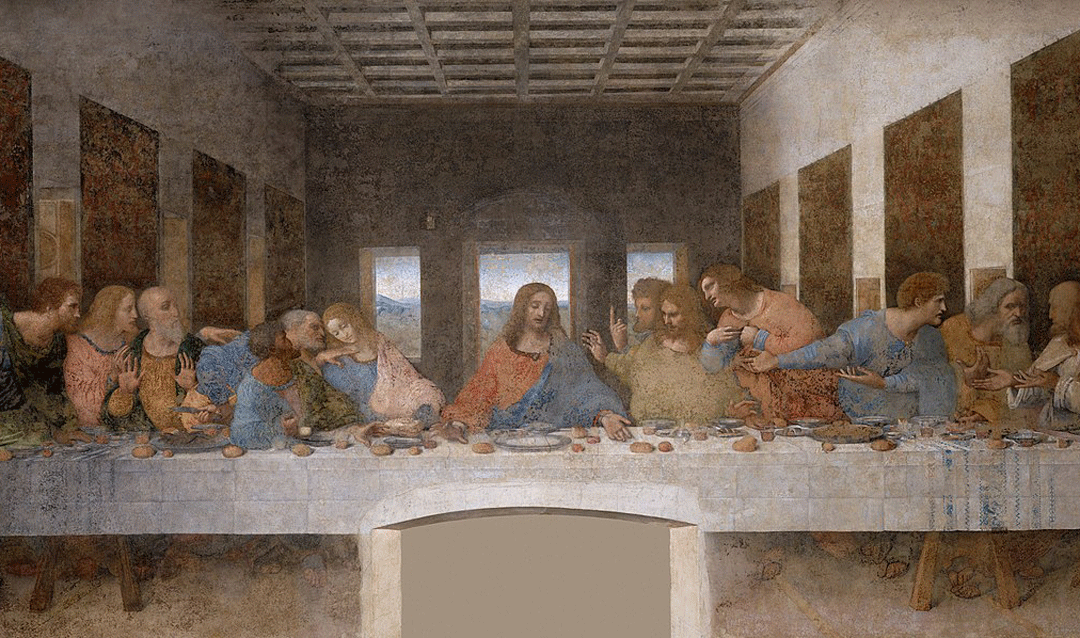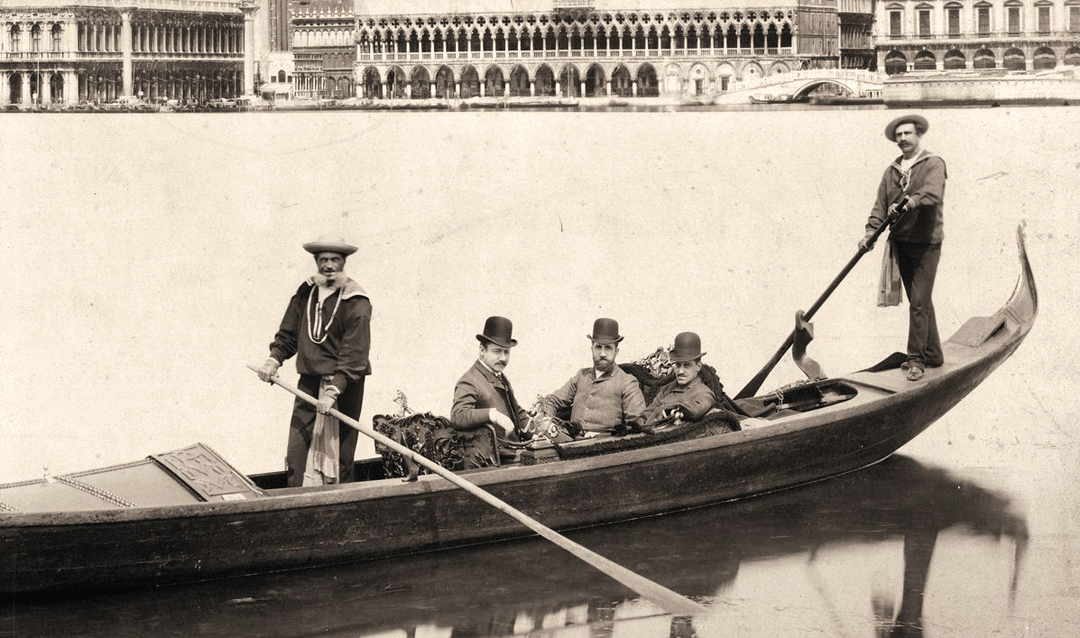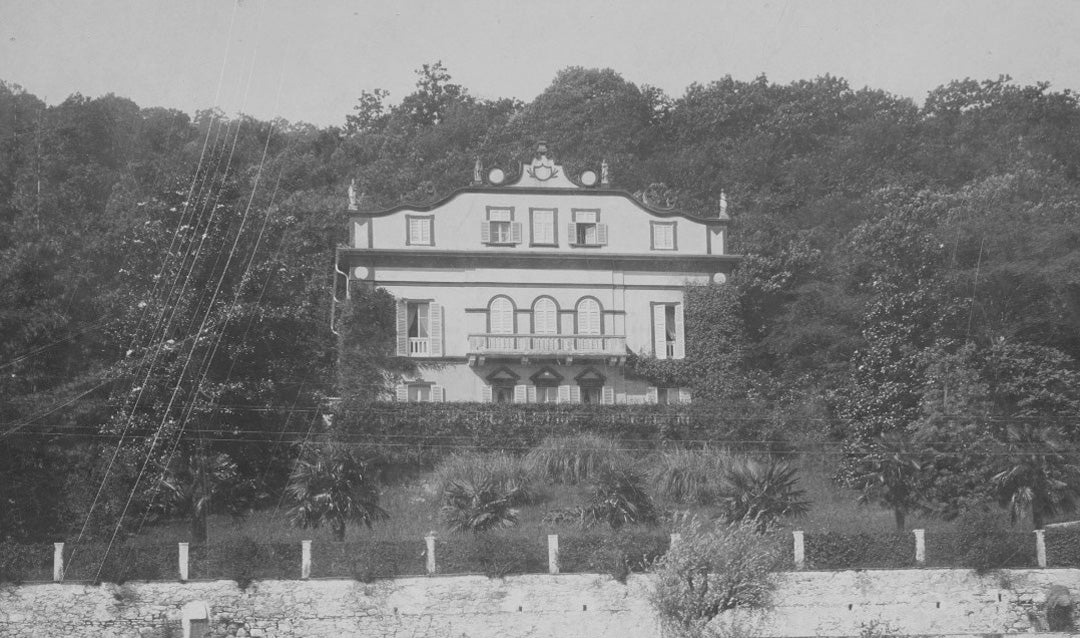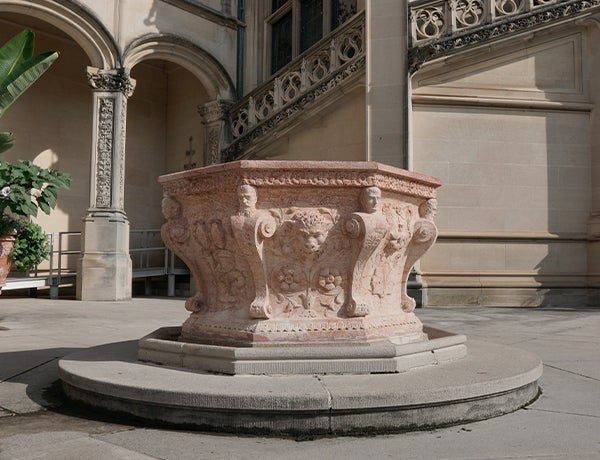Was George Vanderbilt an American Renaissance man?
“He certainly embodied many of the ideals of this period that flourished during his lifetime, and you can still see the influence of the era at Biltmore today,” said Meghan Forest, Associate Curator.
What was the American Renaissance?
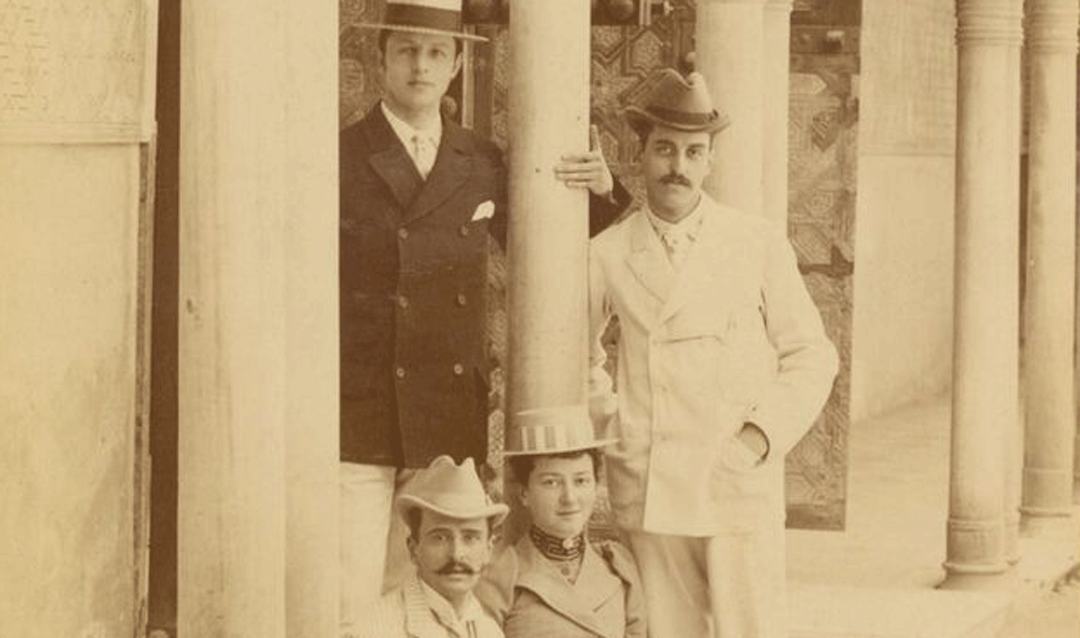
George Vanderbilt (standing, right) traveling in Spain with his cousin Clarence Barker (seated, left), his niece Maria Louisa Schieffelin (seated, right), and her husband William Jay Schieffelin (standing, left), 1891.
In the decades following the Civil War, the United States experienced an optimistic rebirth that mirrored the European Renaissance of the 17th century.
“The American Renaissance was all about developing a national identity of what it means to be American, and part of that was setting up the United States as the successor to the cultural accomplishments of countries across Europe,” Meghan said.
While the European Renaissance had stirred interest in exploration and experimentation in disciplines such as art, architecture, and science, the American Renaissance awakened a desire to explore classic themes and destinations, drawing inspiration from travels abroad to use at home.
America’s coming of age
The American Renaissance took place in the latter part of the 19th century, marking a renewed confidence in the nation’s outlook with time and attention lavished upon the development of ideas, urbanization, transportation, and new forms of communication.
“It was the American Renaissance that made the Gilded Age possible,” said Meghan. “Innovation in technology, propelled by the intellectual energy of the time, led to industrial growth that gave rise to prominent American families like the Vanderbilts.”
Once such families became wealthy, many contributed to pushing the arts farther than previous generations, so the American Renaissance ushered in the glamorous Gilded Age.
American Renaissance ideals
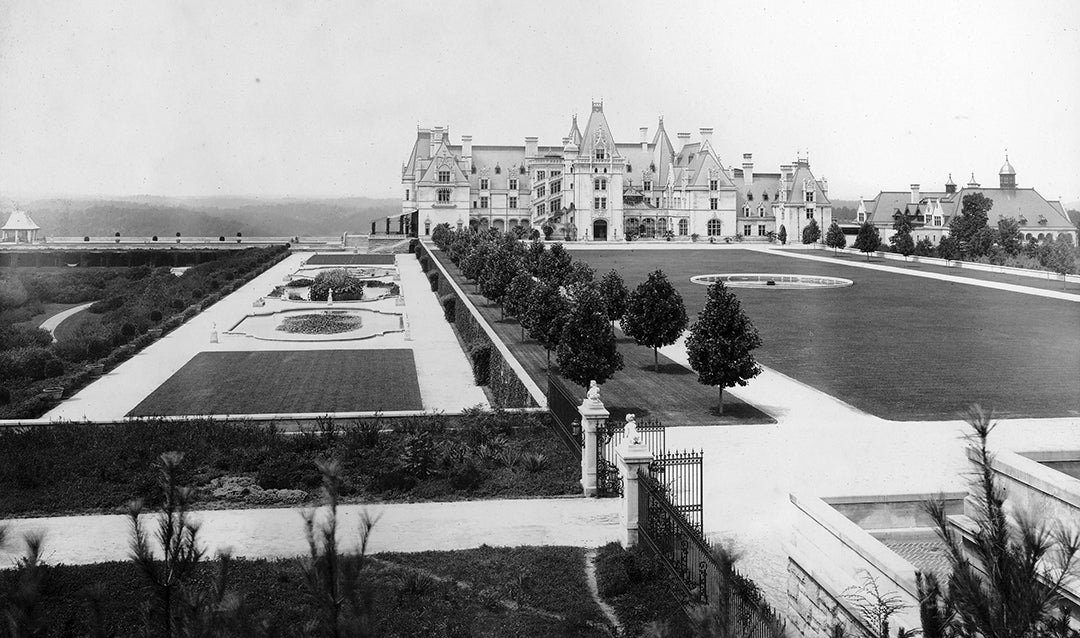
Photograph of Biltmore House and the Italian Garden, ca. 1910
It was during the confluence of both periods that George Vanderbilt first visited Asheville, North Carolina, and became enamored with the area. He envisioned building his new home there, creating a retreat for friends and family that would also showcase his interest in art and literature and house the treasures he collected during his travels.
He retained the services of Richard Morris Hunt and landscape architect Frederick Law Olmsted—two of the most influential designers of the American Renaissance era—to create Biltmore House and its magnificent gardens and grounds.
World’s Columbian Exposition
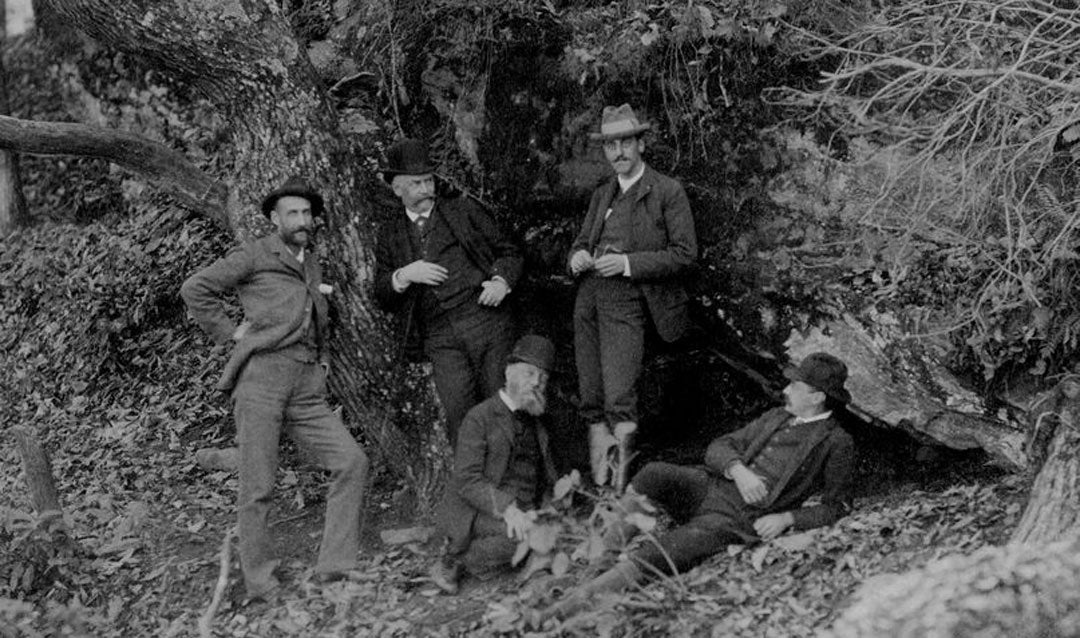
(L-R) purchasing agent and agricultural consultant Edward Burnett, architect Richard Morris Hunt, landscape architect Frederick Law Olmsted, George Washington Vanderbilt, and architect Richard Howland Hunt, son of Richard Morris Hunt, 1892
In 1893, four years after construction began at Biltmore, Chicago hosted the World’s Columbian Exposition. With its remarkable “White City” thoughtfully planned by the nation’s leading designers including Hunt and Olmsted, the extraordinary event further elevated American Renaissance ideals such as world exploration, the experience of different cultures, and new technology like electricity.
With Hunt and Olmsted traveling between Asheville and Chicago during this pivotal time to oversee their roles in both massive projects, it was evident that the Columbian Exposition and Vanderbilt’s new estate shared a common thread: both were created in the regal and fashionable Beaux Arts style that favored neoclassical architecture and European-inspired formal gardens.
“In addition to Hunt and Olmsted’s presence there, we know that George Vanderbilt attended the Columbian Exposition, and that he contributed materials from Biltmore’s managed forestry initiative for estate forester Gifford Pinchot to display. The flags above the fireplace in the Biltmore House Banquet Hall represent the countries that participated in the Columbian Exposition,” Meghan said.
Meaningful travel
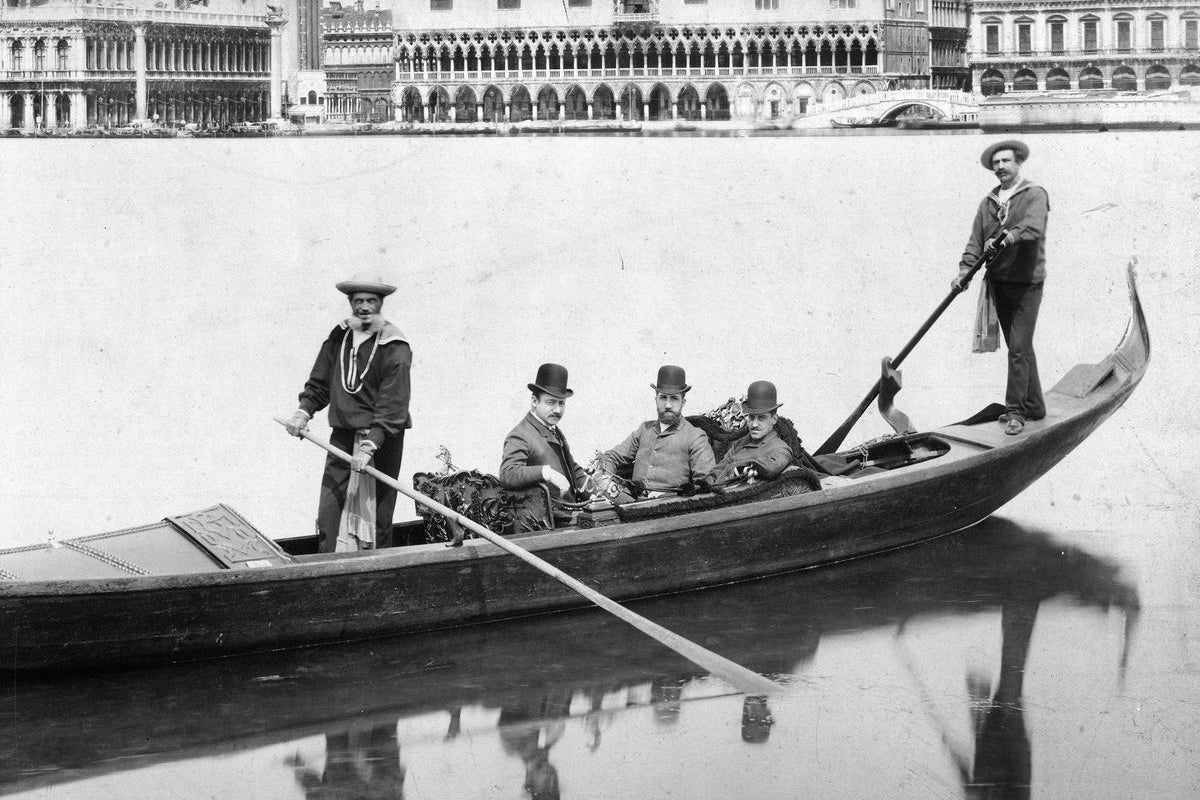
George Vanderbilt (seated, third from left) with unidentified gondola companions in Venice, 1887.
Like many other wealthy Americans of the era, George Vanderbilt traveled extensively, and his trips to Europe, India, and Japan helped fuel his appreciation of history, architecture, and culture.
In particular, his sojourns to Rome, Venice, Milan, and Florence—the epicenter of the Italian Renaissance—gave George Vanderbilt a passion for all things Italian, leading him to choose Italy as a romantic backdrop for the first six weeks of his and Edith Vanderbilt’s four-month European honeymoon.
Renaissance art and patronage
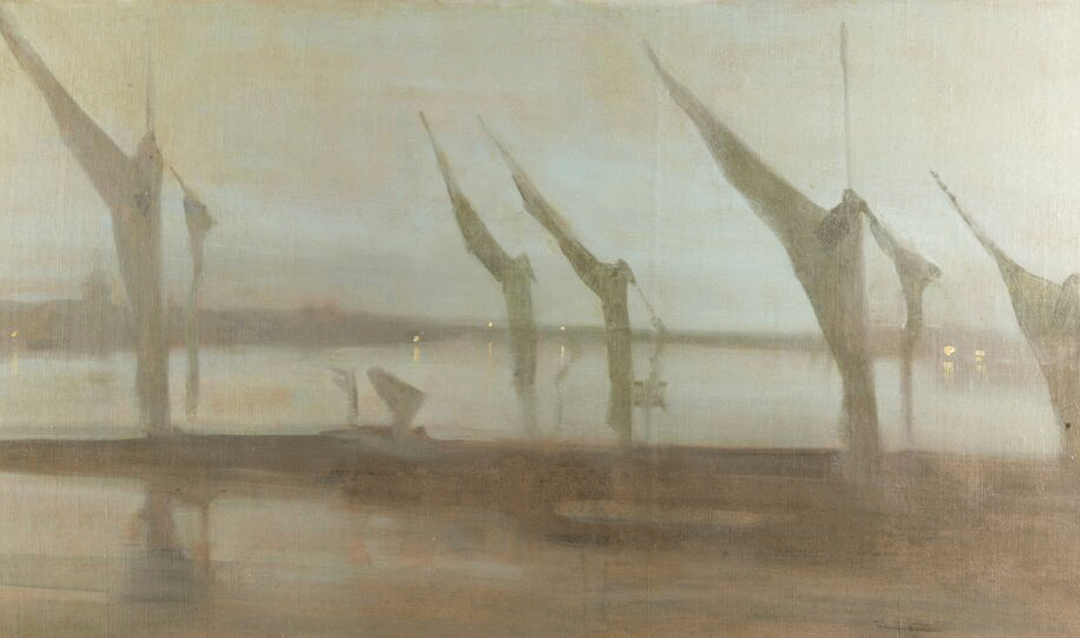
Nocturne: Battersea, c. 1871-1873, James Abbott McNeill Whistler, on display in Oak Sitting Room.
George Vanderbilt purchased this piece in 1900 from dealer Wunderlich and Company.
In order to succeed during the Italian Renaissance, many artists including Michelangelo, Da Vinci, and Botticelli sought and accepted the patronage of wealthy individuals and entities such as the church and the government in order to create works of lasting beauty.
During America’s Renaissance, George Vanderbilt was an active patron of the arts, commissioning and collecting pieces from the new Impressionists as well as many other established artists of his day.
Vanderbilt’s support extended beyond the stunning works he purchased; he also provided philanthropic support for certain libraries and art facilities in New York, educational and vocational support in Asheville, and corresponded with several notable artists including Claude Monet, John Singer Sargent, and James McNeill Whistler.
Vanderbilt’s lasting legacy
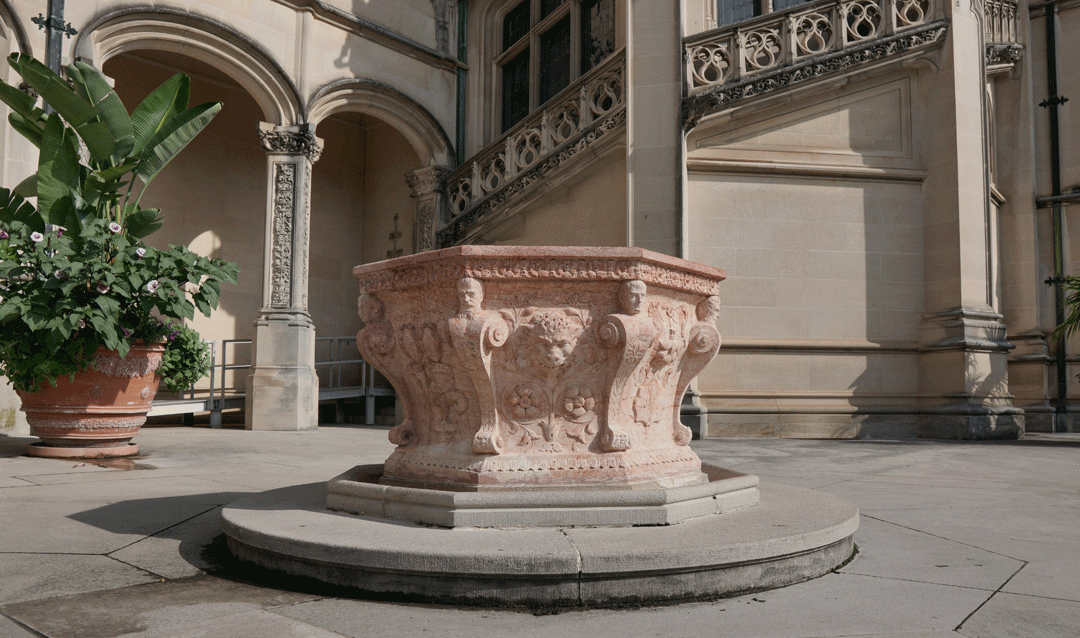
Made of Rosso di Verona marble, this fountainhead was likely originally used to decorate and
protect an active well in Venice during the Italian Renaissance, c. 1500. It has become known as the “Hunt fountain” as it is depicted in the John Singer Sargent portrait of Biltmore House architect
Richard Morris Hunt.
The appreciation of man and his capabilities flourished during the American Renaissance, and the nation felt uniquely positioned to take a leading role in the global arena. George Vanderbilt personified the outlook of this important period in our nation’s history, and, as a true American Renaissance man, his contributions continue to stand the test of time.
Today, you can explore lingering expressions of the American Renaissance with a visit to Biltmore Estate in Asheville, NC. Highlights include America’s Largest Home®, still filled with many of the more than 50,000 objects in Biltmore’s collection, plus 75 acres of exquisitely landscaped and preserved formal gardens that gradually give way to meadows, fields, and managed forests surrounding the property.
Inspiration from Italy
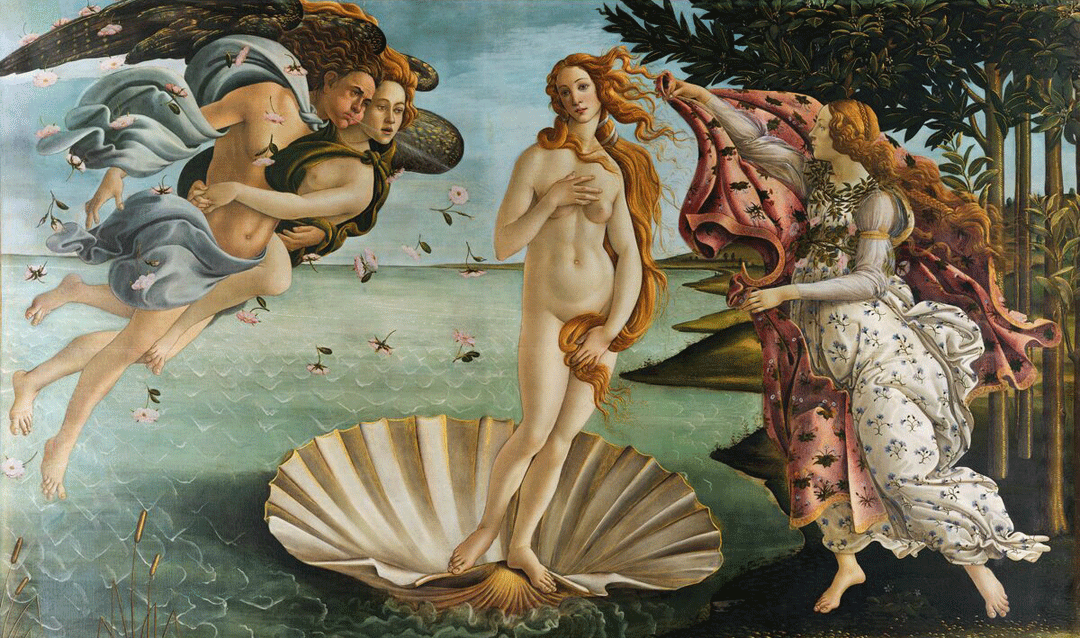
The Birth of Venus by Botticelli is just one of the iconic artworks you’ll experience on a grand scale during our Italian Renaissance Alive exhibition at Biltmore
During your next Biltmore visit, immerse yourself in the sights and sounds of Italian Renaissance Alive, the latest multi-sensory experience created and produced by Grande Experiences and hosted on the grounds of the estate.
In nearby Antler Hill Village, you’ll discover a charming accompaniment to Italian Renaissance Alive through Ciao! From Italy, a large-scale sculptural postcard display featuring quotes and details from the Vanderbilts’ Italian travels.
Plan your Biltmore visit now
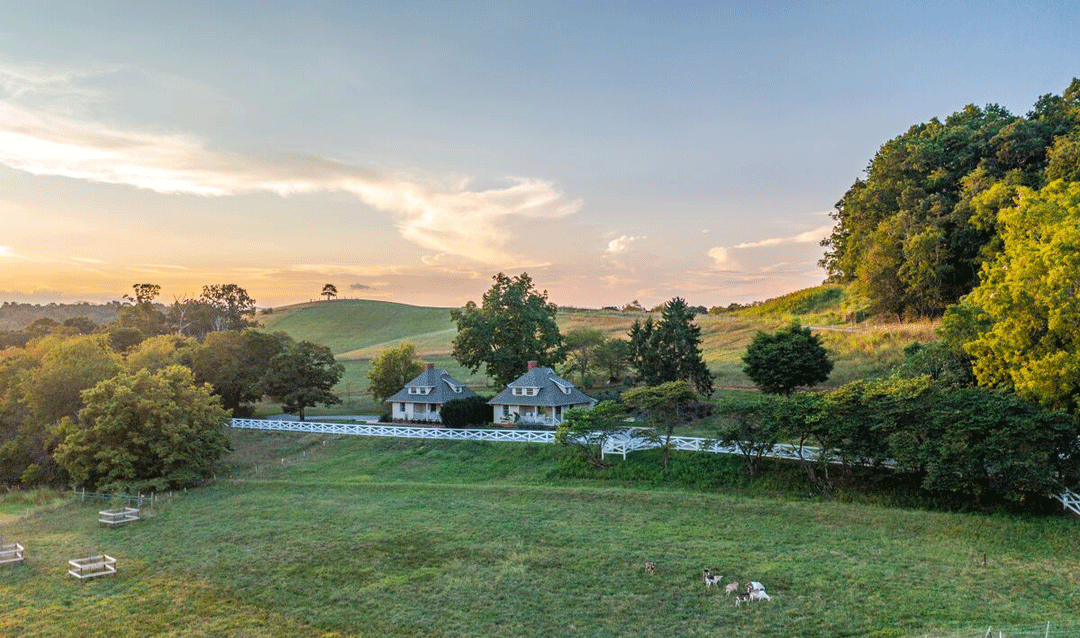
Visit like a Vanderbilt when you choose one of our private, historic Cottages on Biltmore Estate.
Surround yourself with the architecture, travel, and art of the American Renaissance, and make your time with us even more unforgettable with an overnight retreat at one of our thoughtfully designed properties: Village Hotel on Biltmore Estate®, The Inn on Biltmore Estate®, or our historic private Cottages on Biltmore Estate™.
